The Samsung QN70F is quite a decent mid-range television. Its strongest feature is definitely the smoothness of the image – thanks to the 144 Hz panel, low input lag, and a wealth of gamer features, we have here a recipe for nearly the perfect gaming display. It will also perform well for sports fans – the picture is fast, clear, and nothing tears. When it comes to picture quality – it's really not bad. The VA panel offers good black levels, brightness is better than average, and colors look great after calibration. Samsung advertises the QN70F as Neo QLED, meaning Mini LED, and in a certain sense, one can view it that way – but only partially. The backlighting is edge-lit, so it falls short of true Mini LEDs with local dimming. It's a shame because marketing does its job, and the user might feel a bit misled. Additionally, there are some small shortcomings – no USB recording, no DTS support. But despite everything, the QN70F makes a really good impression. It may not be a "true" Mini LED, but for its price, it's a solid piece of television – especially for gamers and anyone who enjoys fast, dynamic content.
- Matching (Score)
- Our verdict
- TV appearance
- Where to buy
- Contrast and black detail
- HDR effect quality
- Factory color reproduction
- Color reproduction after calibration
- Smoothness of tonal transitions
- Image scaling and smoothness of tonal transitions
- Blur and motion smoothness
- Console compatibility and gaming features
- Input lag
- Compatibility with PC
- Viewing angles
- TV efficiency during daytime
- Details about the matrix
- TV features
- Apps
- Playing files from USB
- Sound
Samsung Neo QLED QN70F / QN74F / QN77F vs Hisense E7Q / E79Q
Direct compare
Check the best price offer:
Samsung Neo QLED QN70F / QN74F / QN77FQN70F / QN74F / QN77F
E7Q / E79Q
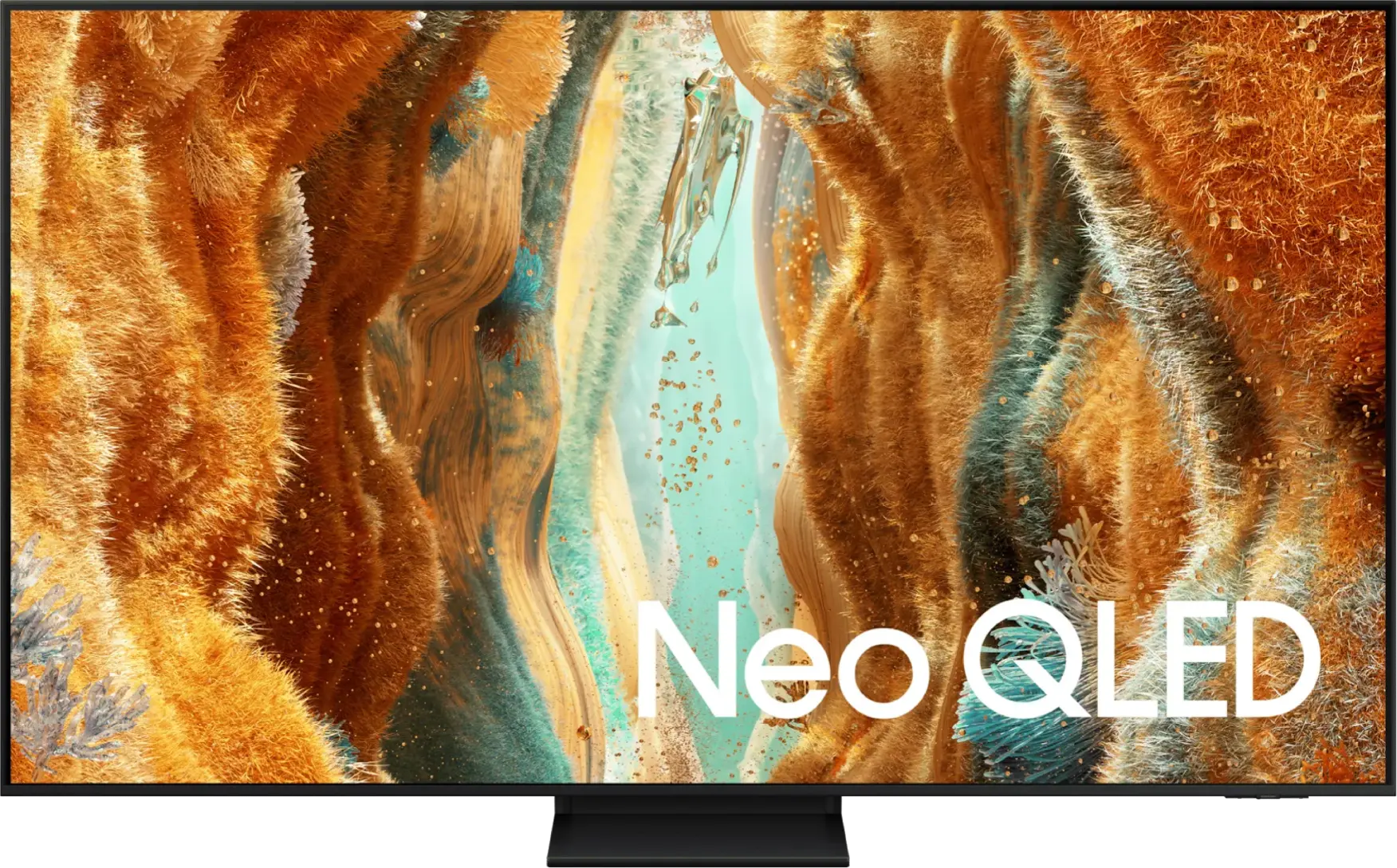
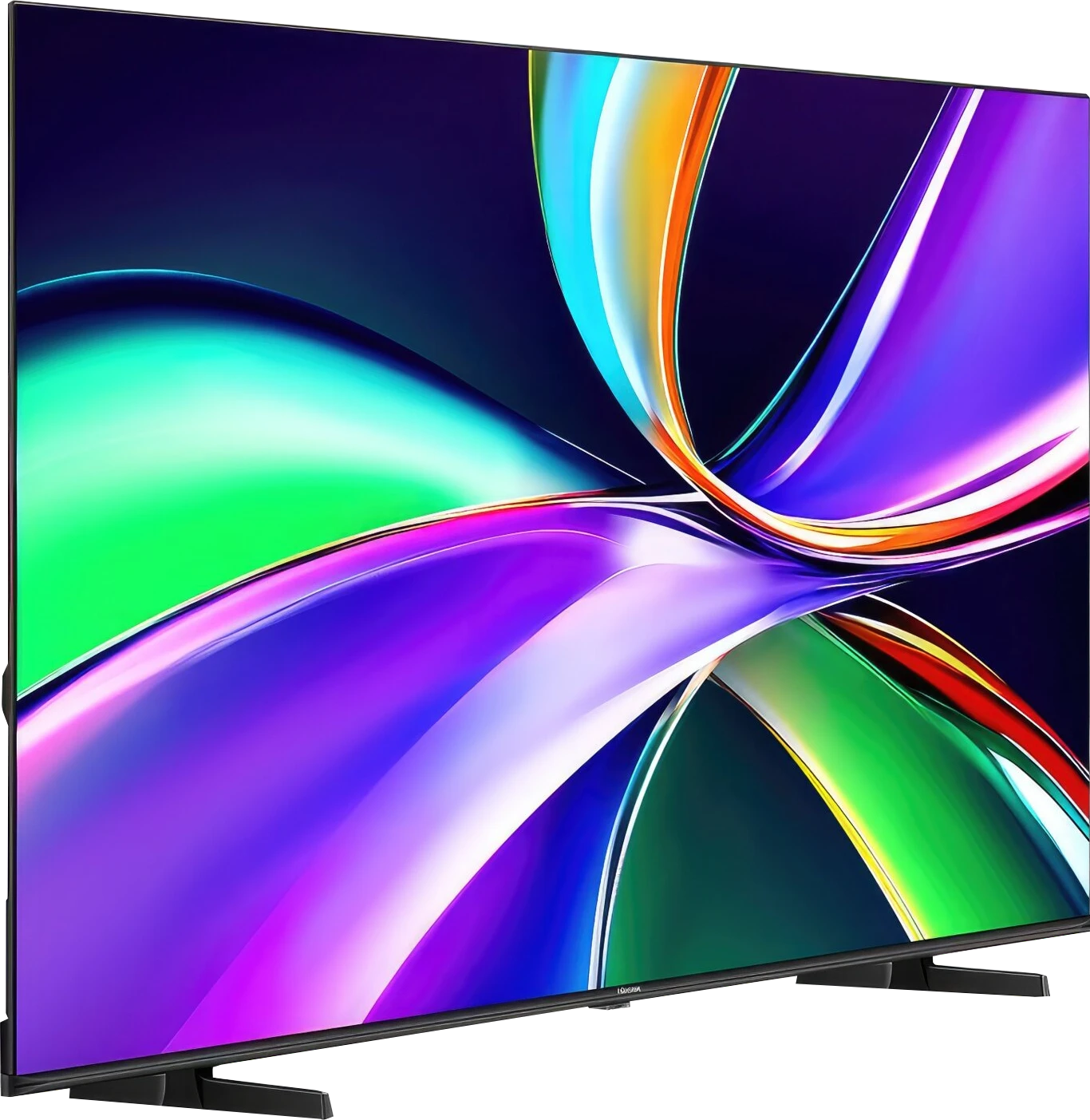
Panel type: LCD VA
Resolution: 3840x2160
System: Tizen
Model year: 2025
Complete the survey to find out the result

Panel type: LCD VA
Resolution: 3840x2160
System: VIDAA
Model year: 2025
Complete the survey to find out the result

Overall rating
7.1
6.1
Movies and series in UHD quality
6.7
6.2
Classic TV, YouTube
6.6
5.9
Sports broadcasts (TV and apps)
6.7
5.1
Gaming on console
8.5
7.1
TV as a computer monitor
8.2
3.0
Watching in bright light
6.3
5.2
Utility functions
7.2
8.7
Apps
8.7
7.7
Sound quality
6.4
6.3
Complete the survey to find out what fits your preferences
Advantages
Nice black and contrast
Above average panel brightness
High refresh rate of 144Hz
Many features for gamers: ALLM, VRR, Game Bar, etc.
Low input lag
4 HDMI 2.1 ports
Extensive and smooth Tizen operating system
Super slim design
Good black and contrast
QLED (PFS LED) – vibrant and saturated colors, DCI-P3 color gamut coverage approx. 92%
Many features for gamers: ALLM, VRR, Low-input lag, Game Bar
120Hz support in 1080p!
VIDAA system – easy to use, with AirPlay, Screen Mirroring, and voice search
Recording to USB from built-in tuners
3.5 mm jack output and component inputs for older devices
Support for multiple audio formats including Dolby Atmos and DTS:X
Attractive price
Disadvantages
No USB recording function
No DTS format
Issues with the HGIG function (for gamers)
Symbolic local dimming (Is this really MINI-LED?)
Dolby Vision adds little (which is a shame)
Poor digital image processing: lack of image enhancement features, average upscaling
Strong dithering when connecting to a PC (colorful fonts)
The build quality of our unit was very average
Our verdict
The Hisense E7Q / E79Q is a type of television that doesn't promise miracles – and maybe that's why it can pleasantly surprise. It doesn't try to pretend to be high-end equipment; it simply does its job. If you're looking for a cheap screen for everything that can handle Netflix, a console, and morning YouTube while having coffee, this model makes a lot of sense. The VIDAA system has matured over the past few years, and you can see that the manufacturer is learning from experience. It has AirPlay, screen mirroring, and voice search in Polish – everything works, maybe not at lightning speed, but smoothly enough not to be irritating. You won't find thousands of apps like in Google TV, but the most important ones are readily available. It's a system meant to be simple and practical, not overloaded with unnecessary gimmicks – and in this sense, it really holds up. There’s also something interesting for gamers. The E7Q / E79Q offers low input lag, an automatic low latency mode (ALLM), support for VRR up to 60 Hz, and even a 120 Hz mode in 1080p resolution. It's not a screen for hardcore e-sports enthusiasts, but if you simply enjoy turning on your console in the evening to play a few rounds, this television will get the job done without complaints. And what about picture quality? We won’t deceive you – it’s not exceptional, but there are also no reasons to complain. A brightness of around 350 nits won’t impress anyone, but the contrast thanks to the VA panel can really surprise positively. The black levels are quite deep, and the colors have a pleasant intensity, especially in SDR mode. It's a bit of a shame that Dolby Vision doesn't add much – because if it worked as it should, we would have a television that could confidently be recommended for HDR viewing as well. On the other hand, it's hard to expect that in this price range. It's simply a fair, well-priced screen that doesn’t try to be a star but can deliver solid picture quality and surprisingly good features. And while it’s not perfect, after a few days of use, it's hard not to think: "wow, this cheap Hisense really does the job."
TV appearance
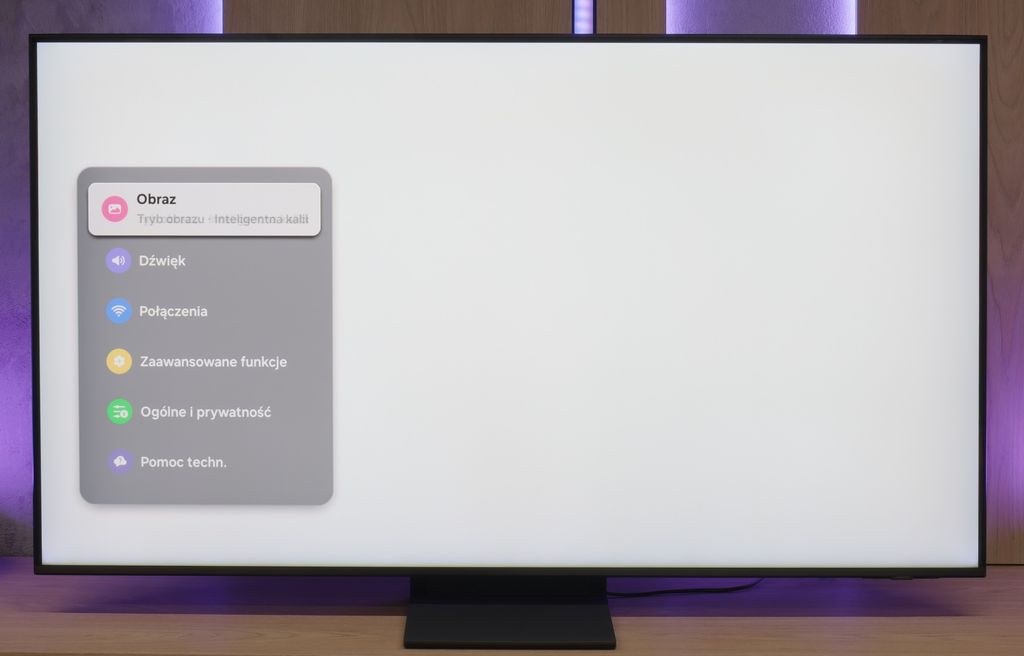
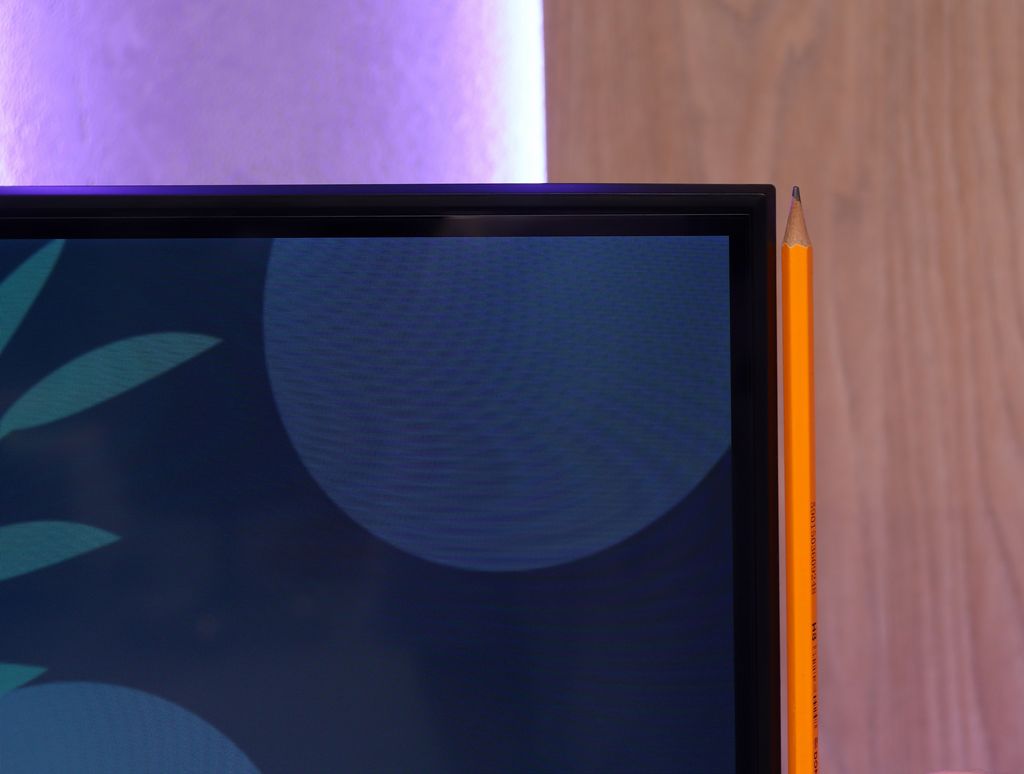
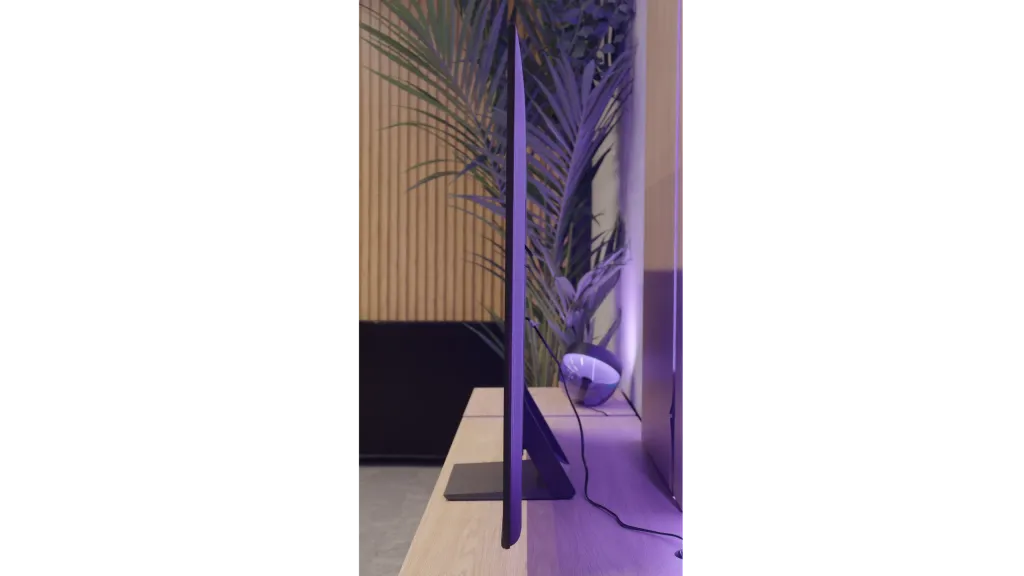
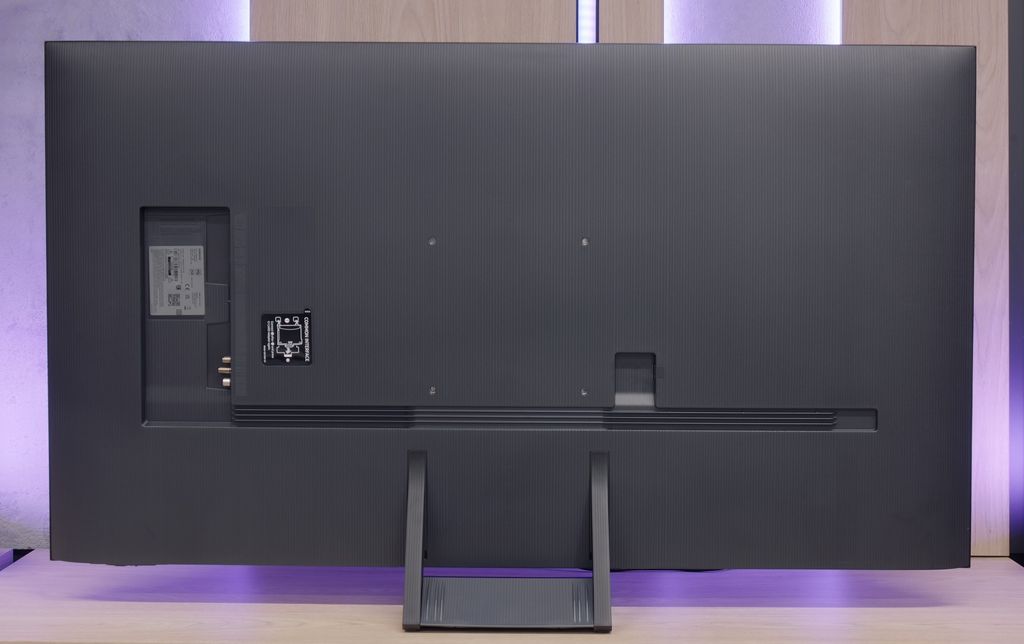
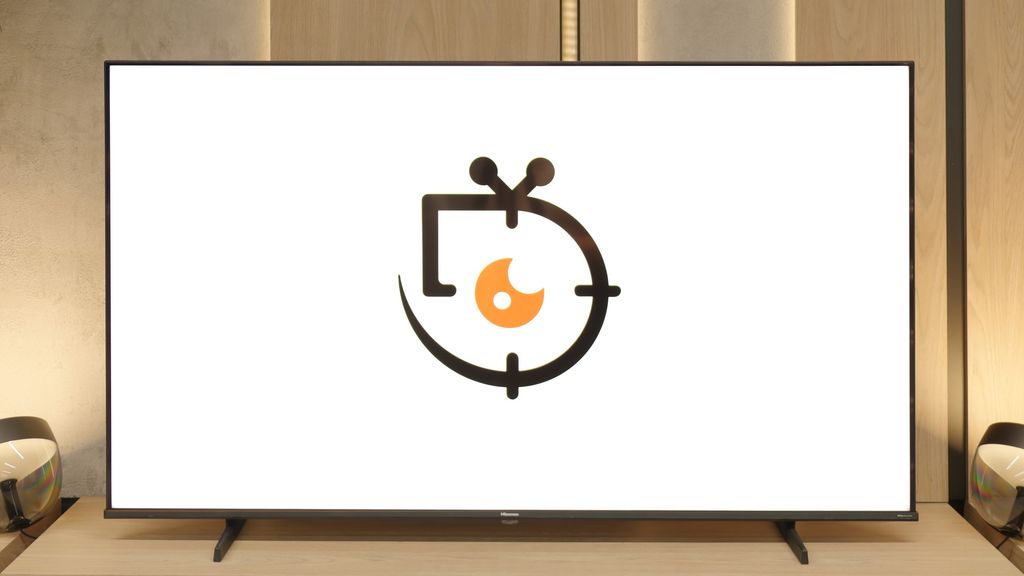
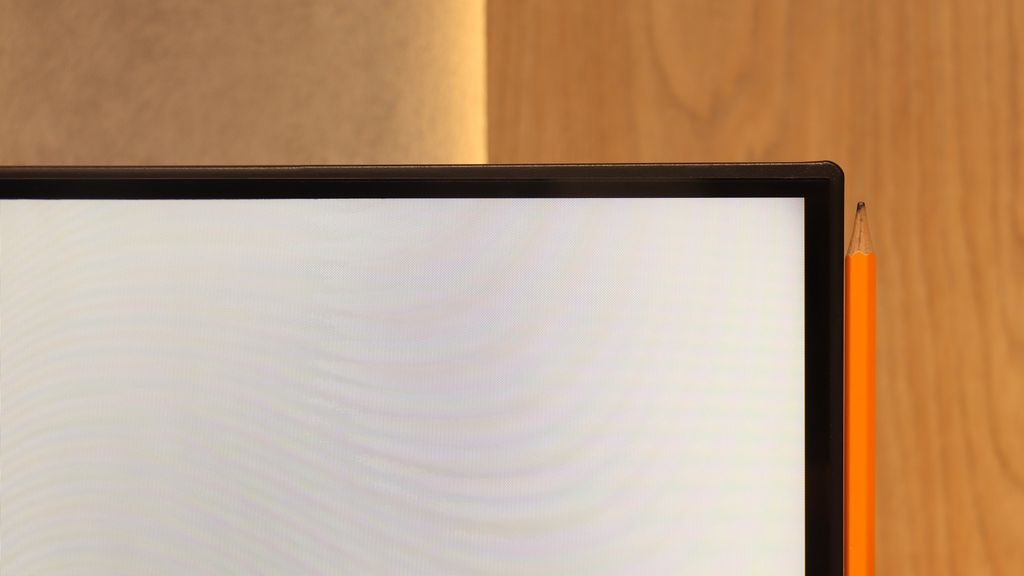
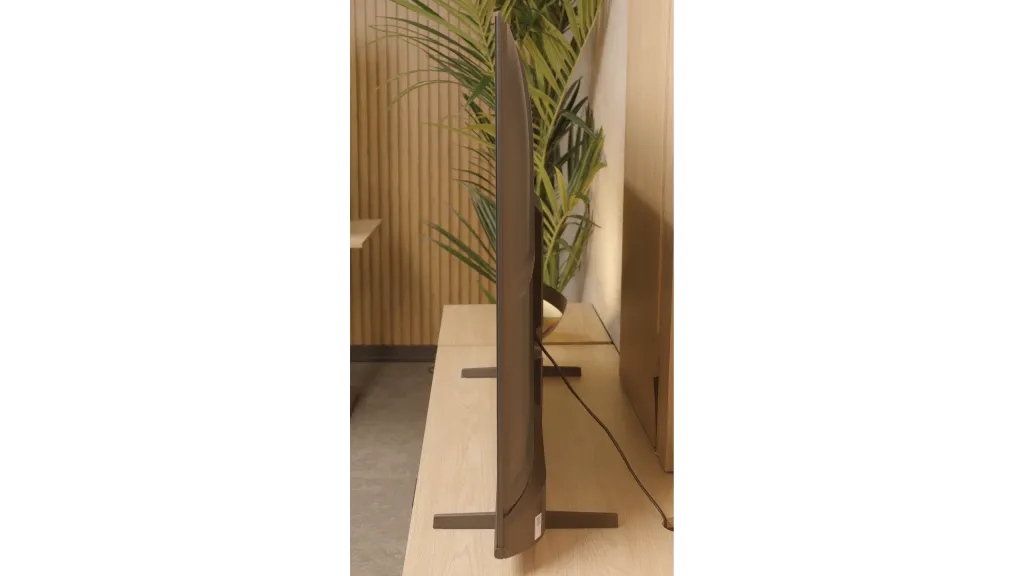
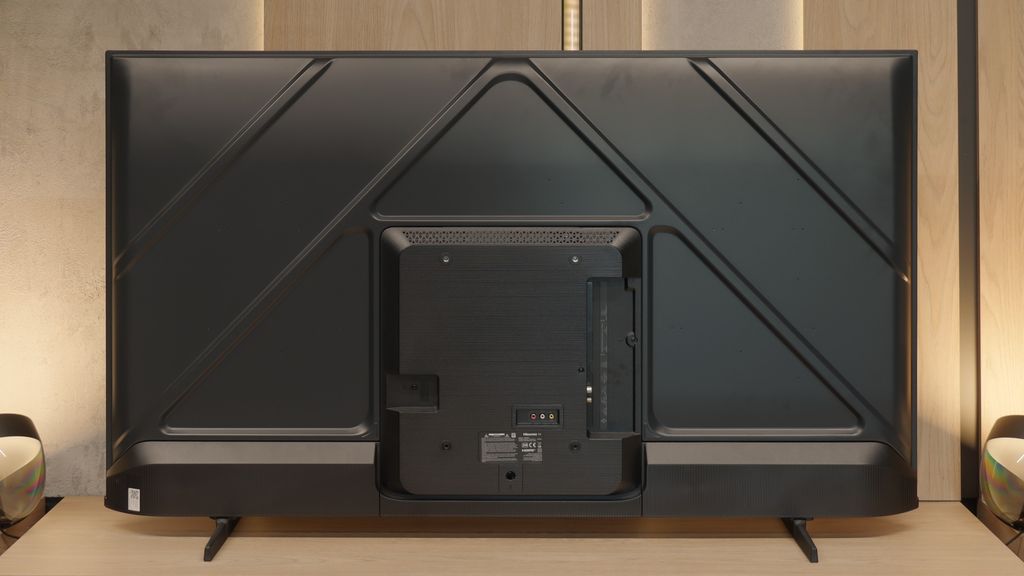
Contrast and black detail
6.2/10
5.7/10
Local dimming function: Yes, number of zones: 20 (1 x 20)
Local dimming function: No
Contrast:

Result
9,200:1

Result
7,000:1

Result
5,350:1

Result
5,700:1

Result
5,300:1

Result
5,400:1

Result
5,450:1

Result
3,800:1

Result
5,000:1

Result
4,350:1
Halo effect and black detail visibility:
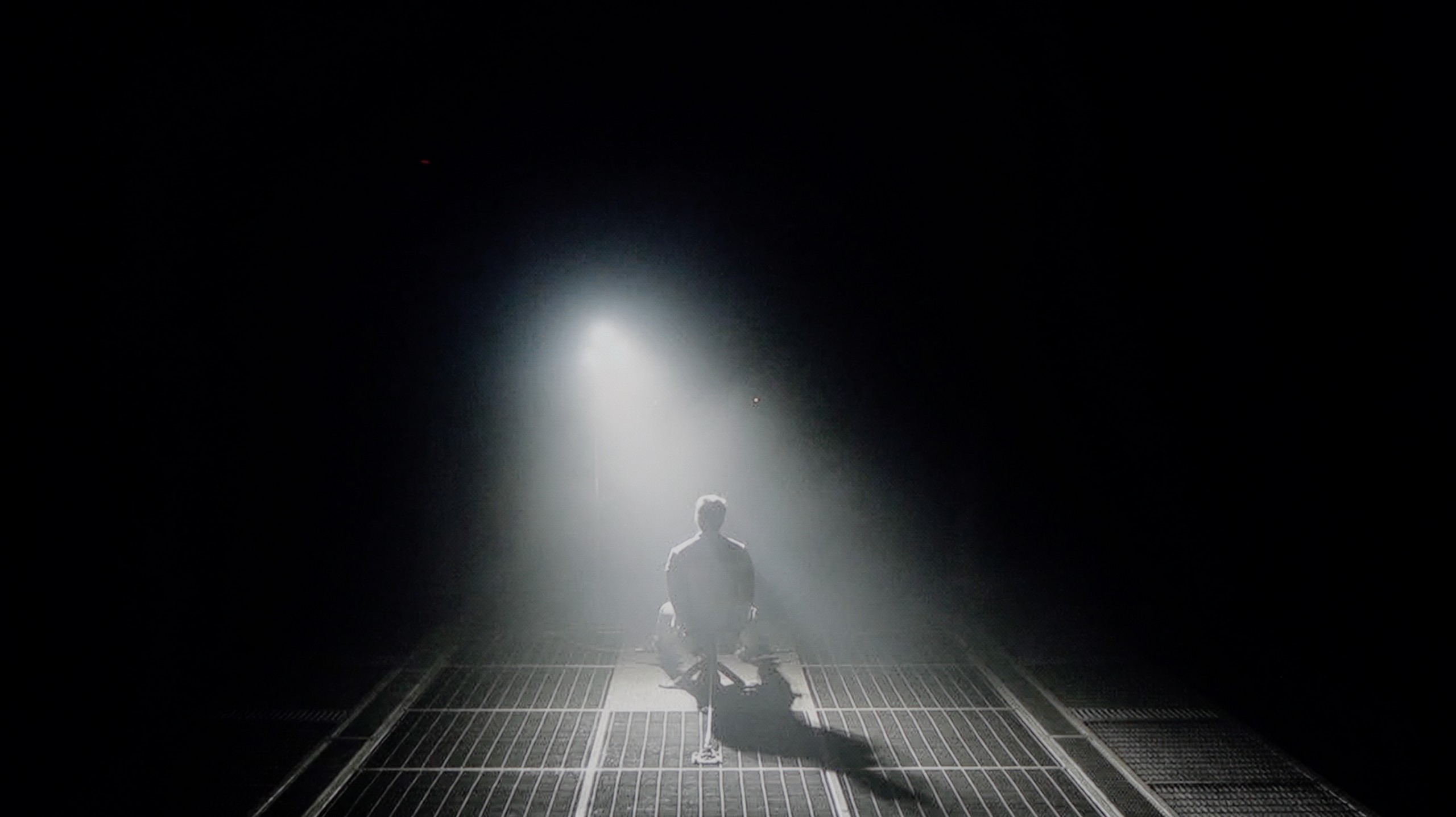
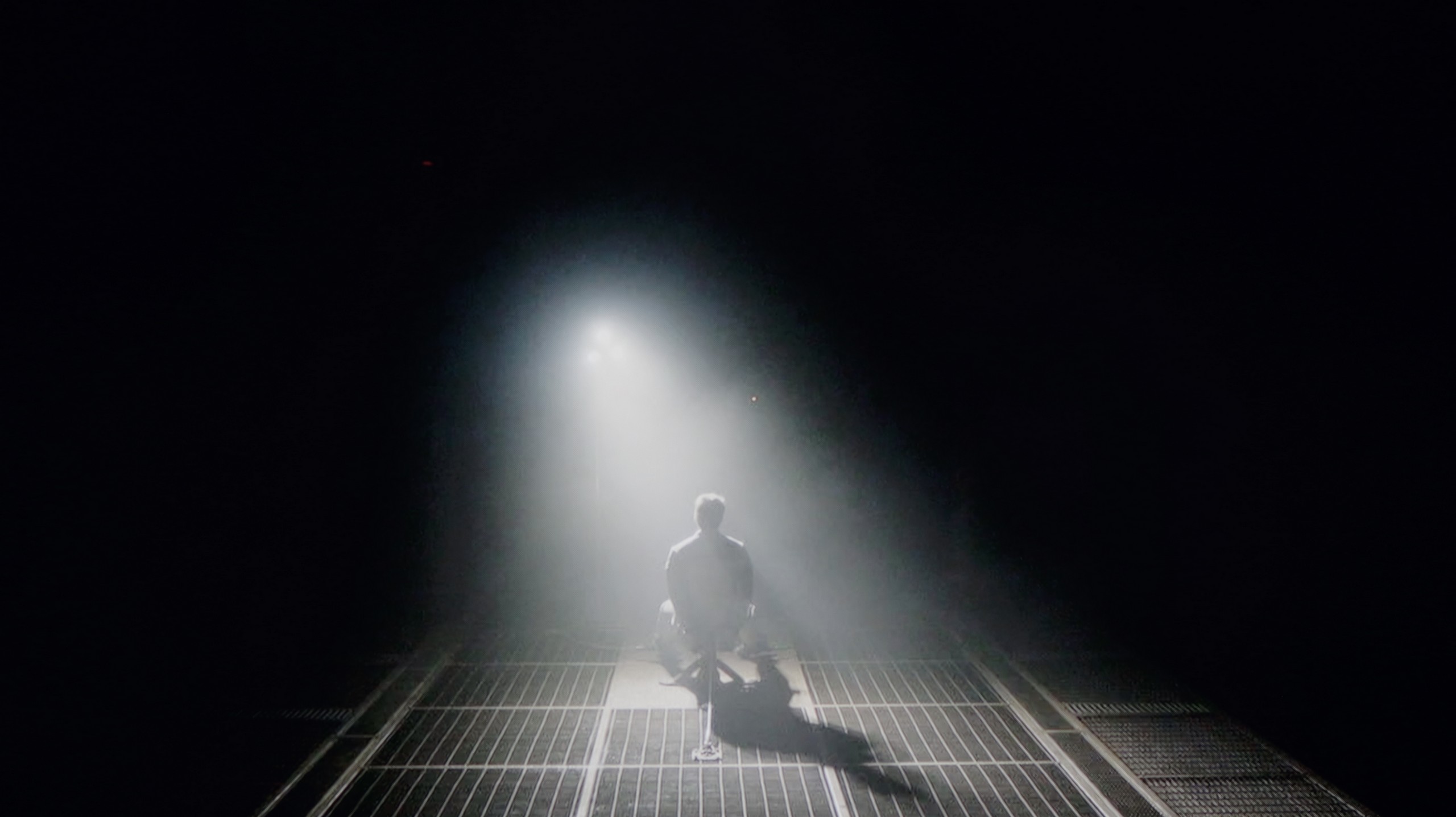
The QN70F is equipped with a VA panel that offers high native contrast – this is already a good starting point for blacks, especially for evening viewing. But theoretically, this does not end its capabilities. The television is branded as Neo QLED, which means the presence of Mini LED technology and a local dimming system. And indeed – the QN70F has such a function. The problem is that we are not talking about classical local dimming with LEDs placed directly behind the panel. Instead, edge lighting is used with a full-screen dimming mechanism known as global dimming. The effect of this is that instead of selective brightness control in individual zones, the entire screen is slightly dimmed when a dark scene appears. In practice, this means that the contrast is average compared to Mini LED models that offer true local dimming. The black level is not bad – it's thanks to the VA panel itself – but we cannot speak of precise light control that advanced systems with multiple zones provide. And here comes the question: is the QN70F series television really a Mini LED TV, or just a marketing variation on the Q70 series? Looking at the technical aspects – it is hard to consider this model a full-fledged representative of this technology. However, in everyday use, the black level looks decent and may be fully satisfying for many people.
The Hisense E7Q / E79Q in our test variant of 58 inches is equipped with a VA panel, which has a significant impact on the perception of contrast and black levels in movies or series. With such a panel, one can expect decent contrast and a stable visual effect that performs really well in most scenes. In our measurements, we obtained values reaching around 6000:1, which is considered a solid result in this price range. However, it should be noted that this is not a local dimming design, so one shouldn’t expect deep, “pitch-black” blacks known from more expensive models. In some scenes, the black may have a slightly bluish hue, which is completely natural for this technology and price. However, this is a compromise that does not interfere with everyday viewing – especially when watching in the evening with slightly dimmed lighting.
HDR effect quality
5.6/10
5.1/10
Luminance measurements in HDR:

Result
619 nit

Result
449 nit

Result
500 nit

Result
422 nit

Result
483 nit

Result
300 nit

Result
329 nit

Result
379 nit

Result
389 nit

Result
397 nit
Scene from the movie “Pan” (about 2800 nits)


Scene from the movie “Billy Lynn” (about 1100 nits)


Static HDR10


Dynamic: HDR10+
Dynamic: Dolby Vision


HDR luminance chart:
Hisense E7Q / E79Q
HDR luminance
Samsung Neo QLED QN70F / QN74F / QN77F
HDR luminance
QN70F is a TV that can positively surprise when it comes to brightness. In ideal test conditions, it reaches even 800 nits, which – for this price range – is really solid. Of course, that's a result from measurement test patterns, so we decided to check how it performs in practice, with real movies. Here, the TV somewhat tones down its capabilities. In most of the tested scenes – for example, in "The Meg" – the actual HDR brightness was around 500 nits. That's still a good result that allows you to enjoy HDR effects, although it is far from perfect. On the other hand, we have a QLED screen with a quantum dot layer, which means very good color reproduction capabilities. The colors are vivid and saturated. QN70F covers about 94% of the DCI-P3 color space, and in the wider BT.2020 gamut, it exceeds 75%, so in this regard, there's nothing to be ashamed of.
Hisense E7Q / E79Q is a television with average brightness, whose peak luminance level is around 350-380 nits. This is an absolute minimum that allows for watching HDR content in a way that is close to the creators' intentions, although without a clear "wow" effect. The results of synthetic tests on white images have been confirmed in practice – in movie scenes, the bright parts of the image are stable and fairly uniform, but it is hard to speak of a true "lighting impact" here. In everyday use, for example, while watching Netflix or YouTube, the HDR effect is acceptable and is completely sufficient for most users. However, it must be stated clearly – this is not the level of top screens, and one should not expect that at this price point. Fortunately, the Hisense E7Q / E79Q has an advantage that allows it to gain quite a few points: it is a PFS LED QLED panel, utilizing an additional phosphor layer that improves color reproduction. The measured range of the DCI-P3 palette is around 92%, which means that the colors in most scenes are vibrant, well-saturated, and pleasing to the eye, especially for this price range.
Factory color reproduction
7/10
5.2/10


Factory Mode
After calibration
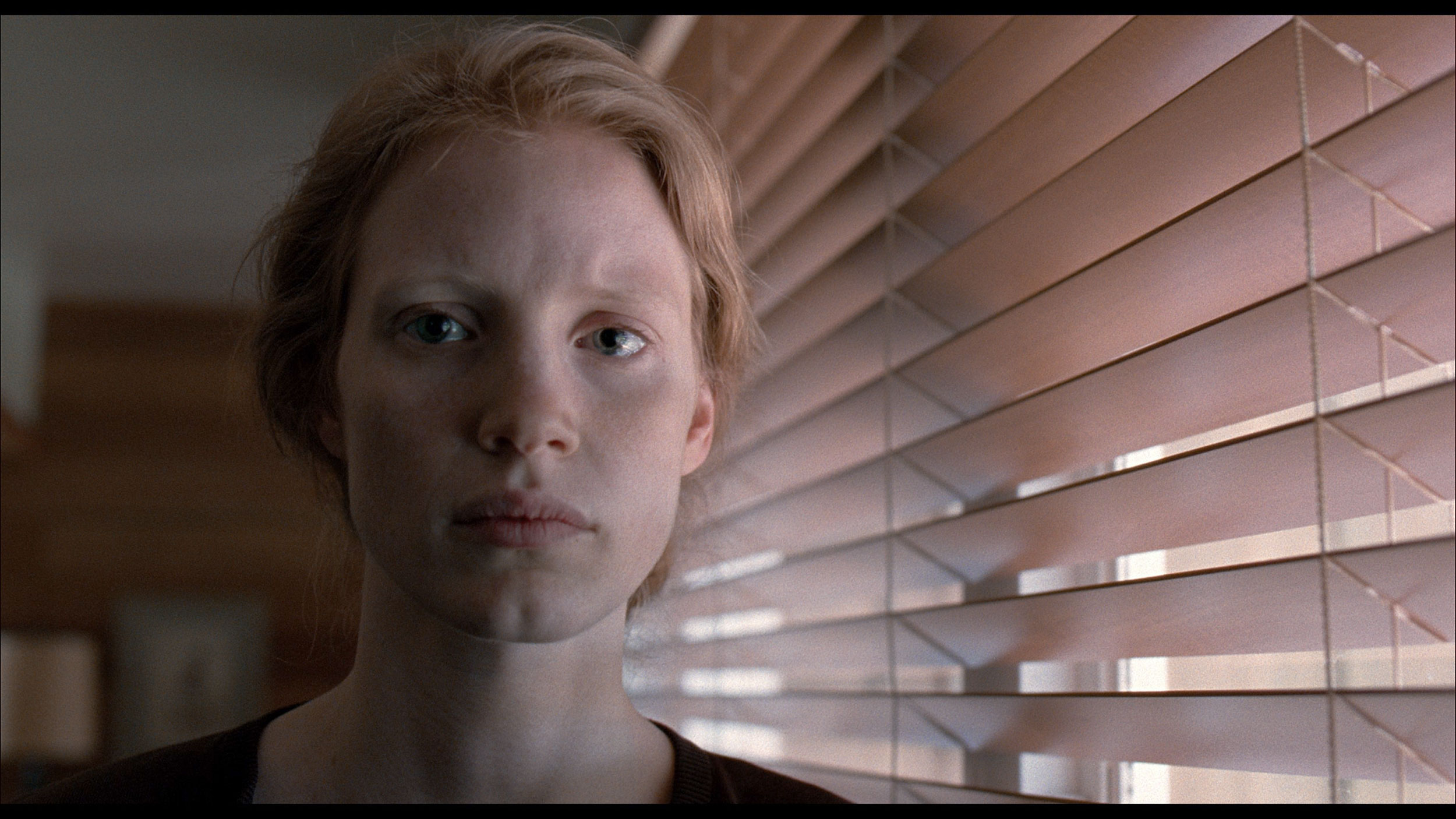
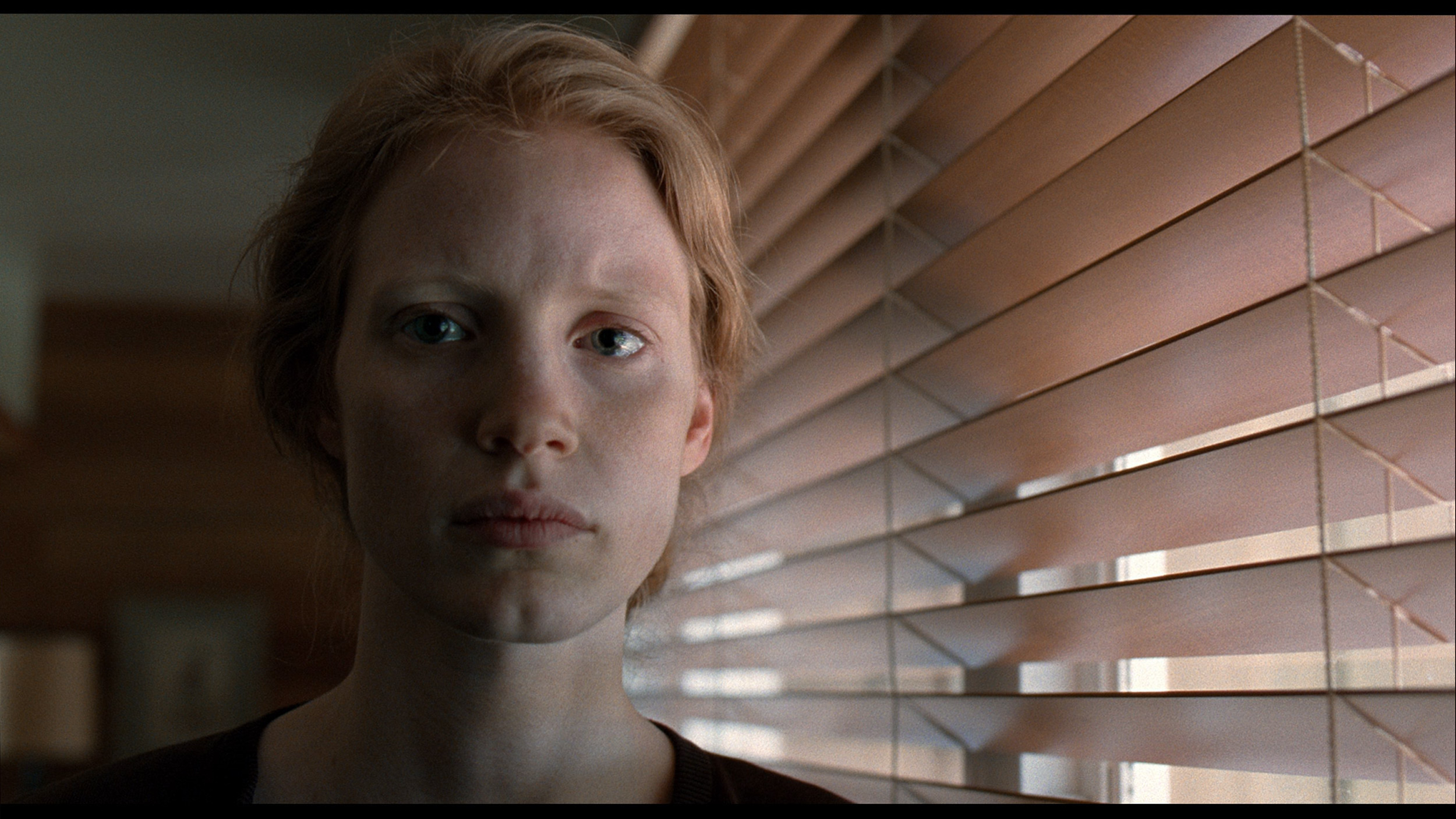
Factory Mode
After calibration
We tested the QN70F in the best default picture mode, which is Filmmaker Mode. It must be said that in this particular test unit, the factory settings performed quite well. The picture was calm, natural, and despite minor deviations, pleasant to perceive. The biggest flaw was a slight dominance of red in the white balance, which caused a slight pinkish tint to the entire scene. However, this was not a glaring flaw – rather subtle and only noticeable when directly compared to a properly calibrated screen. A somewhat larger issue appeared in the brightness characteristic. The television tends to understate the brightness of parts of the image that should be displayed more brightly. As a result, some details can appear slightly dimmed – not so much lost entirely, but not as clearly pronounced as they should be. Nevertheless, as far as a television in this category and in these settings goes, we consider the result to be a good starting point for further calibration.
In Filmmaker mode, the Hisense E7Q / E79Q television was able to really surprise positively. Even after the first measurements, it turned out that the white balance is quite well calibrated, and the only minor deviation was a slight tendency toward a purple hue, which we mentioned earlier. However, this did not significantly affect the overall character of the image – it remained coherent and pleasant to perceive. A much larger problem turned out to be the brightness characteristics (gamma) in SDR content and the EOTF curve in HDR films. The television clearly brightened the image, flattening the contrast and taking away its depth. Gamma values could drop from the reference 2.4 down to about 1.9, making the image appear as if it were covered with a thin, milky layer. Fortunately, this is a problem that can be relatively easily corrected through calibration.
Color reproduction after calibration
8.5/10
7.4/10




After calibration, the QN70F shows that it can offer a really high level of color reproduction. It nearly perfectly balanced the white point, and the values in the Color Checker test dropped below 3 – that is, below the threshold at which the average eye can perceive differences. The image looks natural, and the colors are accurately represented, without excessive saturation or the coolness known from factory settings. It must be said that Samsung provides very extensive calibration options – not only for enthusiasts but also for professionals. The QN70F takes advantage of this potential and, after proper adjustment, can come close to much more expensive models in terms of color accuracy. The only thing one could still criticize is the brightness characteristics. There is still a tendency to brighten the smallest parts of the image – particularly those that should remain darker. However, this is a design feature of this model, not a calibration error. Despite this, the final effect definitely deserves recognition.
The biggest beneficiary of calibration for the Hisense E7Q / E79Q turned out to be the SDR mode without a doubt. It managed to achieve nearly perfect picture quality – most errors in the Color Checker test dropped below a value of 3, and often even below 2, which is a remarkable result for this class of equipment. The greatest improvement came from aligning the brightness characteristic (gamma), making the picture no longer look washed out and regaining its natural depth. In HDR content, colors were also improved, and the purple tint we mentioned earlier was eliminated, but errors in the Color Checker measurements were still noticeable. This is due to the fact that – as is often the case with Hisense televisions – the screen manipulates brightness quite strongly, oversaturating some colors. This was also indicated by the EOTF curve, which was slightly above the reference values, suggesting these minor problems with excessive brightening. Despite this flaw and the construction limitations that arise with HDR content, the Hisense E7Q / E79Q gained a lot after calibration. In everyday use, the television presents a cohesive, natural, and pleasant-to-the-eye picture, and the difference compared to factory settings is truly vast.
Smoothness of tonal transitions
9/10
8.5/10
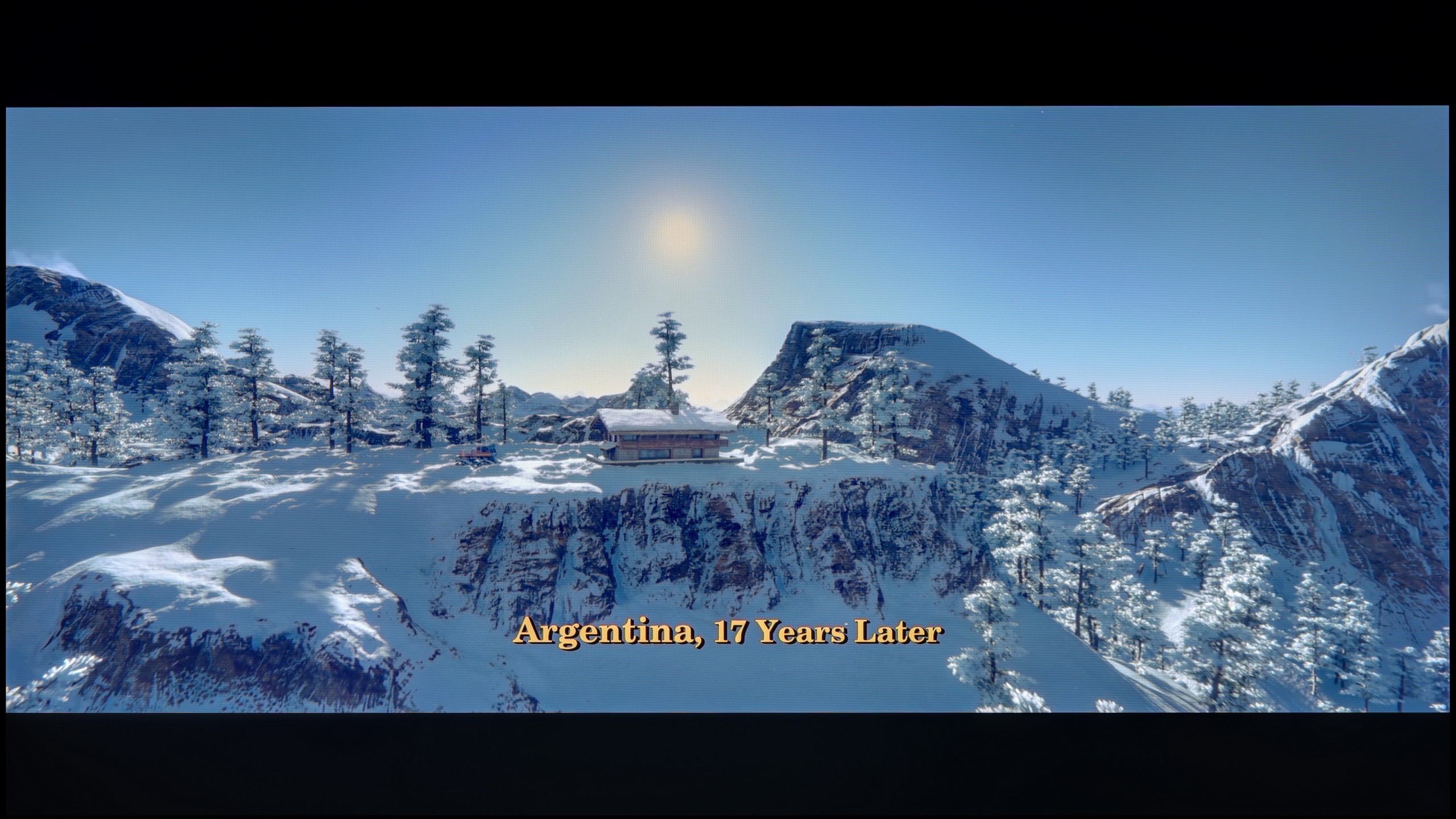











In terms of tonal transition fluidity, the QN70F performs really well. The gradients are smooth, and the colors blend into each other without noticeable thresholds or banding. Even in more challenging film scenes – especially very dark ones – any imperfections are minimal, and you really have to focus to notice them. In everyday viewing, most users should not encounter any issues with color blending. The image looks clean and coherent, without artificial smoothing or distortions. This is another aspect where the QN70F pleasantly surprises.
For such a budget-friendly television, the Hisense E7Q / E79Q performs really well with a challenging element like the smoothness of tonal transitions. In most scenes, the colors blend together naturally, without visible jumps or artificial edges. Lighter parts of the image look particularly good – the transitions are smooth and pleasing to the eye. Minor issues only appear with very dark shades of gray, where slight banding can be noticed. However, this is a detail that doesn't affect the overall perception of the image. For a television in this category, the result is more than just decent.
Image scaling and smoothness of tonal transitions
6.9/10
5/10
Smooth transition function
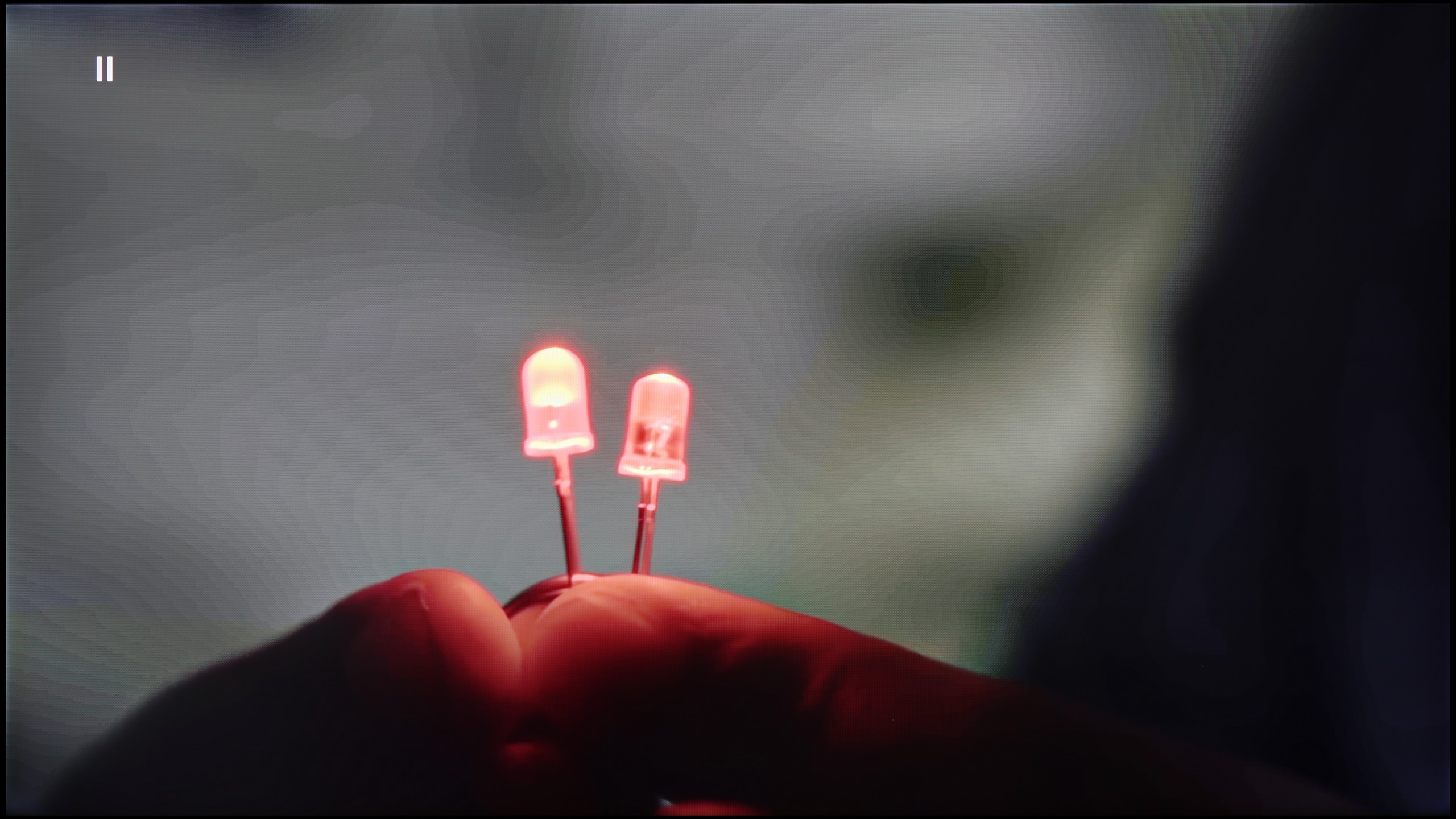
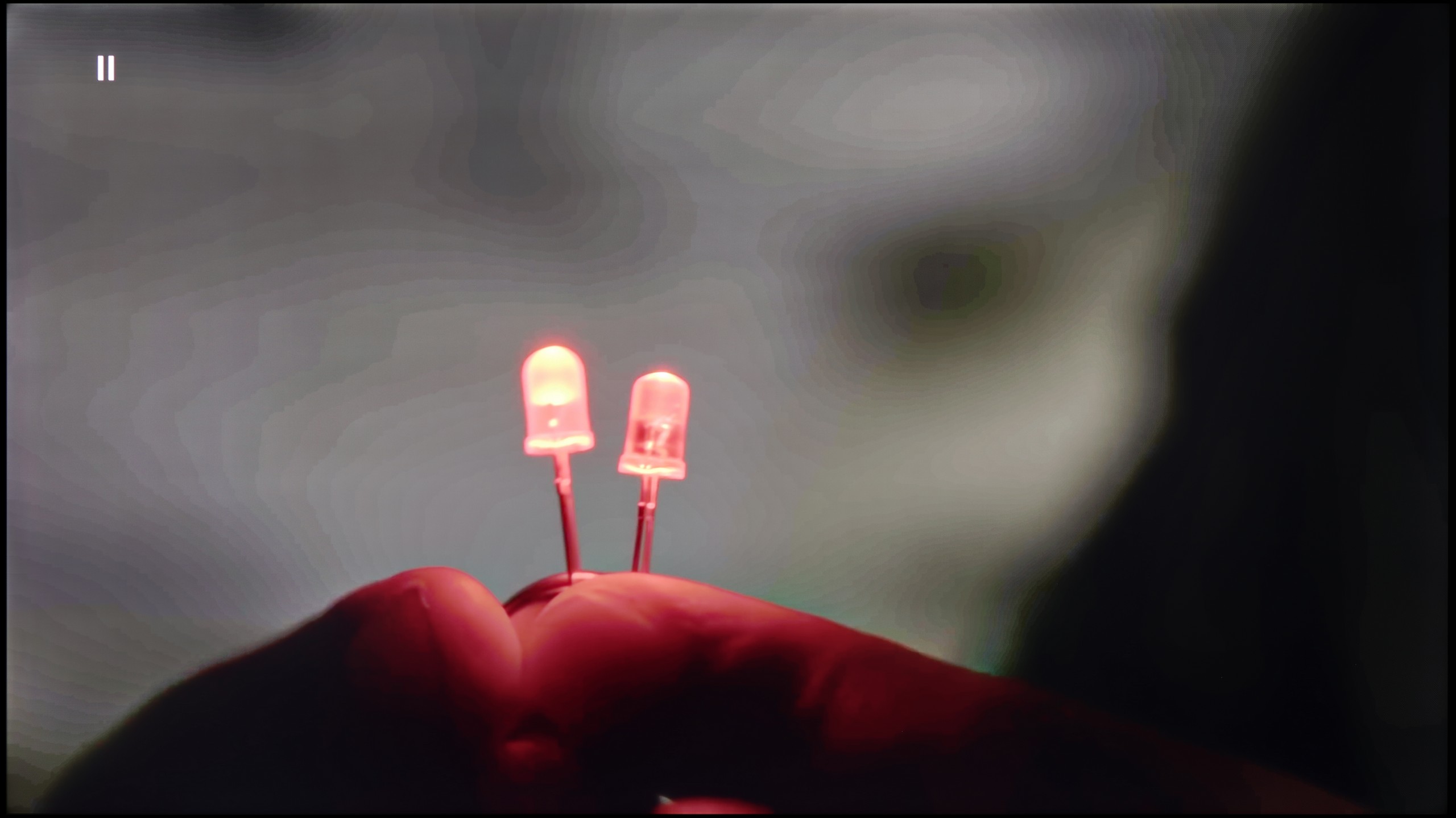
Image without overscan on the SD signal
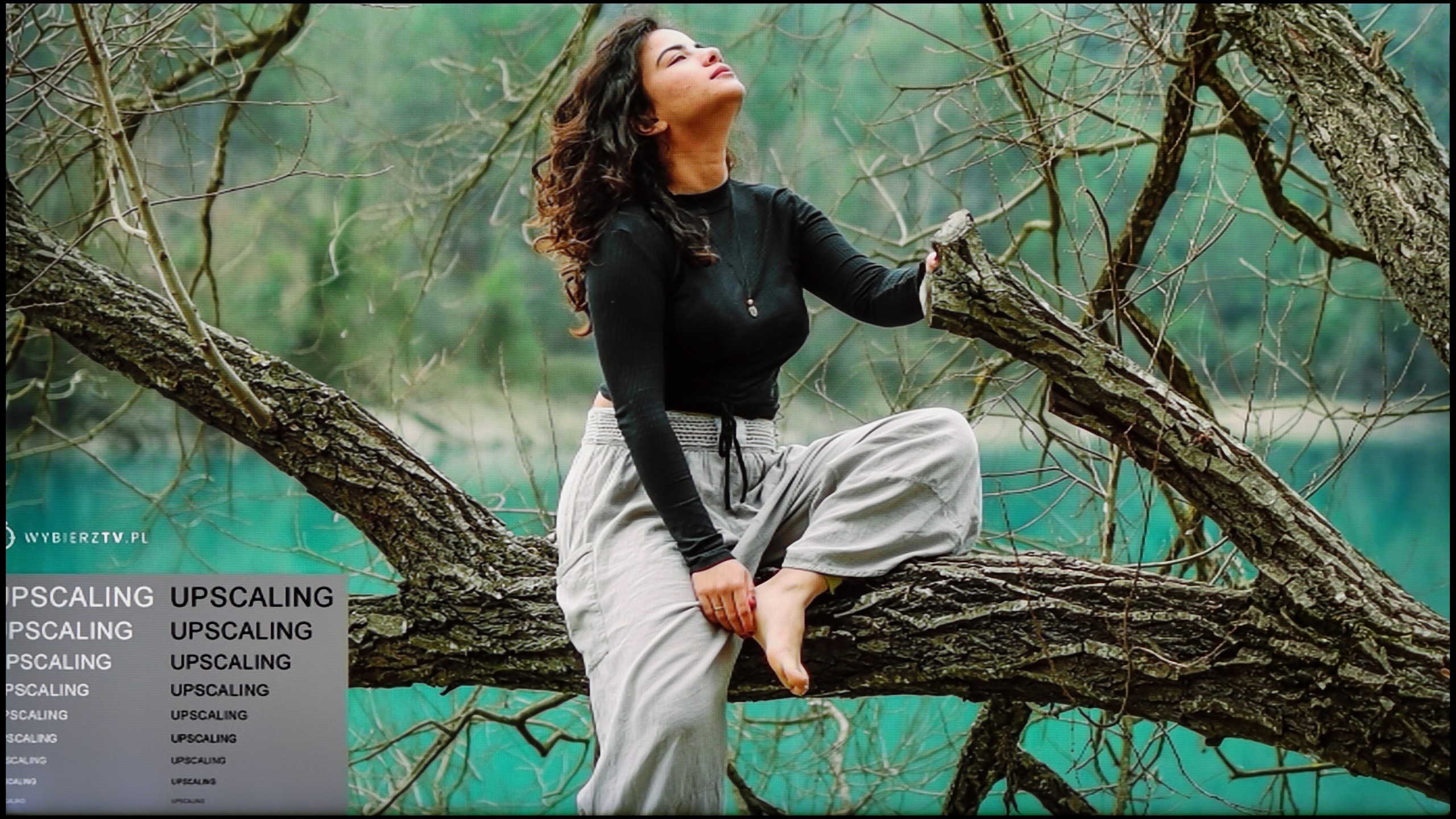

Samsung QN70F offers a distortion reduction feature that improves the smoothness of tonal transitions. In "Standard" mode, it works quite well - smoothing problematic transitions without significantly interfering with the image structure. Film grain is partially removed, but details such as texture or skin structure still remain visible. The "High" mode operates much more aggressively. The smoothing is stronger, but it comes at the cost of a noticeable loss of detail. Therefore, in practice, we recommend sticking with the "Standard" setting or completely turning off this feature. The improvement in gradation may be less spectacular, but the image retains more naturalness.
When it comes to scaling low-quality content, the QN70F performs very well. Tests with lower resolution images were really impressive. Despite slight aliasing of contours, everything looks clean and clear, even if the original content was very poor. It's just a shame that the TV has an overscan issue that cannot be completely turned off. As a result, the image from very low resolution may be slightly cropped, which is mainly visible on subtitles or the interface.
In the case of Hisense E7Q / E79Q, upscaling and digital image processing are not the strongest features of this television. It is clear that the manufacturer opted for simplicity rather than advanced image processing algorithms. The television does not offer any functions for smoothing tonal transitions or systems for improving image clarity, which means that lower resolution materials simply look very raw. On the screen, subtle compression edges can be noticed, which better processors in other models can effectively hide.
During tests of HD materials, we noticed that the E7Q tries to artificially enhance detail, which sometimes works and sometimes has the opposite effect – the image becomes soft, slightly smeared, at times even "watery." There is no aggressive sharpening that ruins naturalness, but there is also no finesse in detailing that better image processors offer.
Blur and motion smoothness
7.5/10
4.8/10
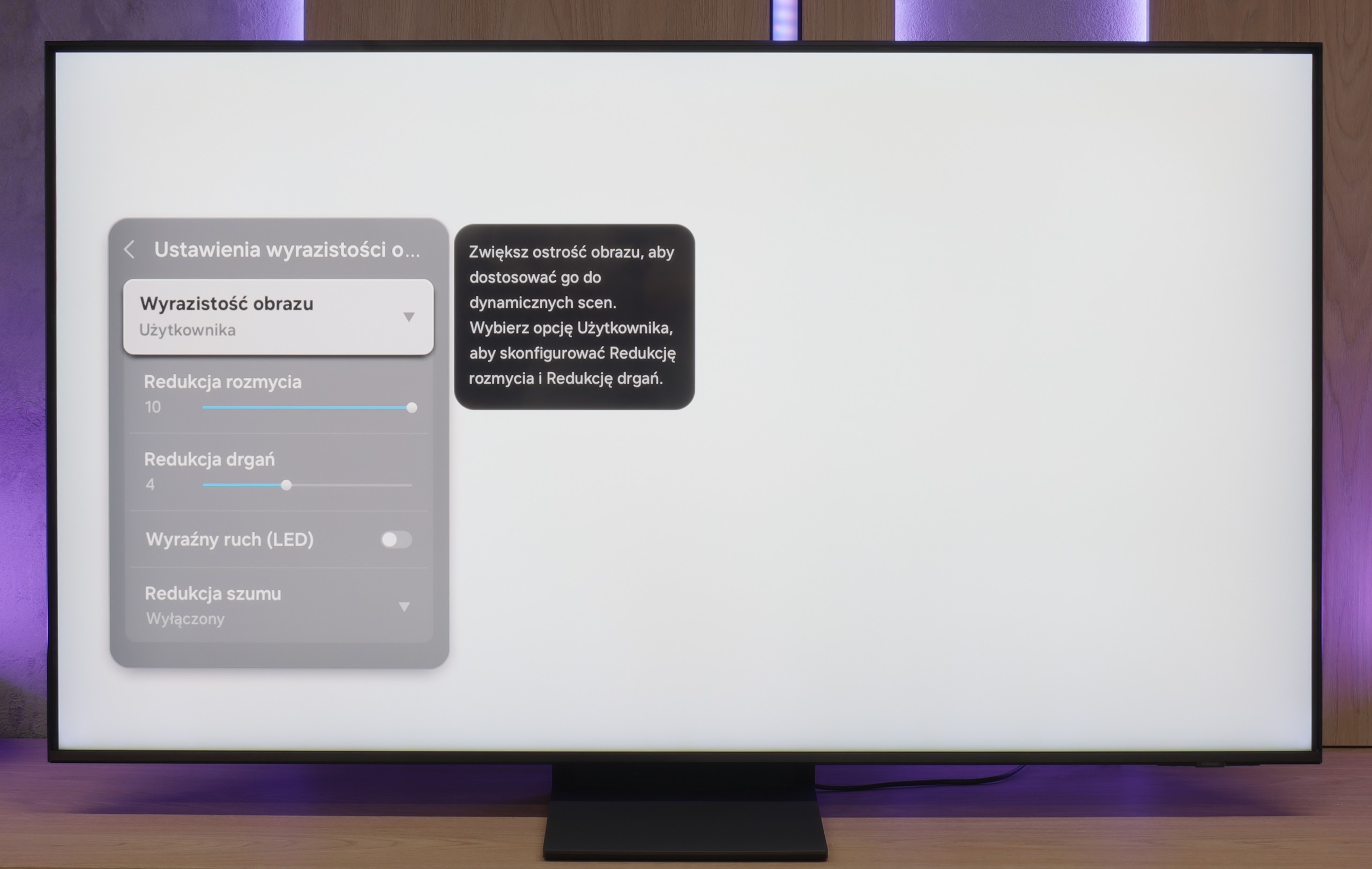
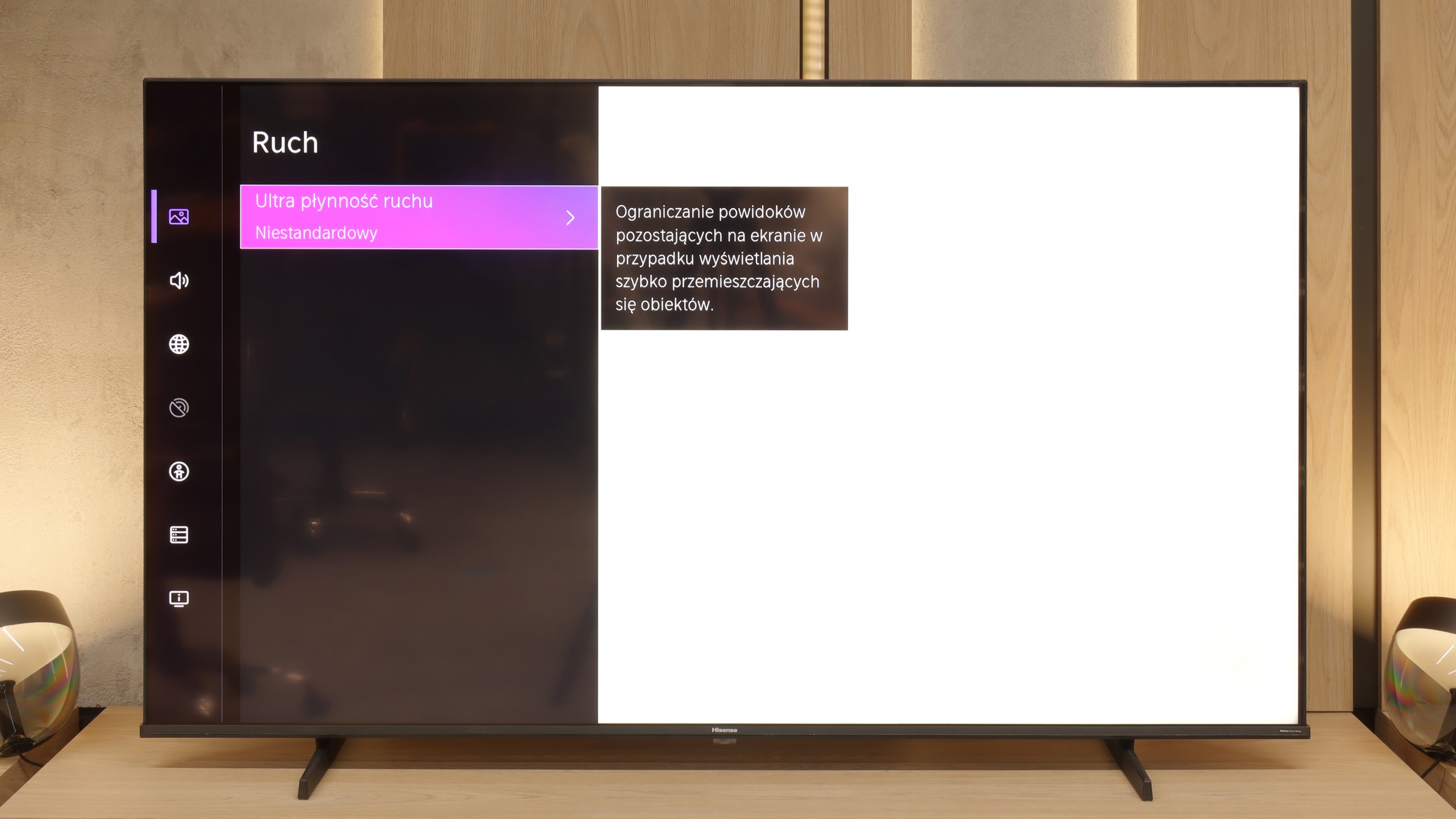
Blur (native resolution, maximum refresh rate):
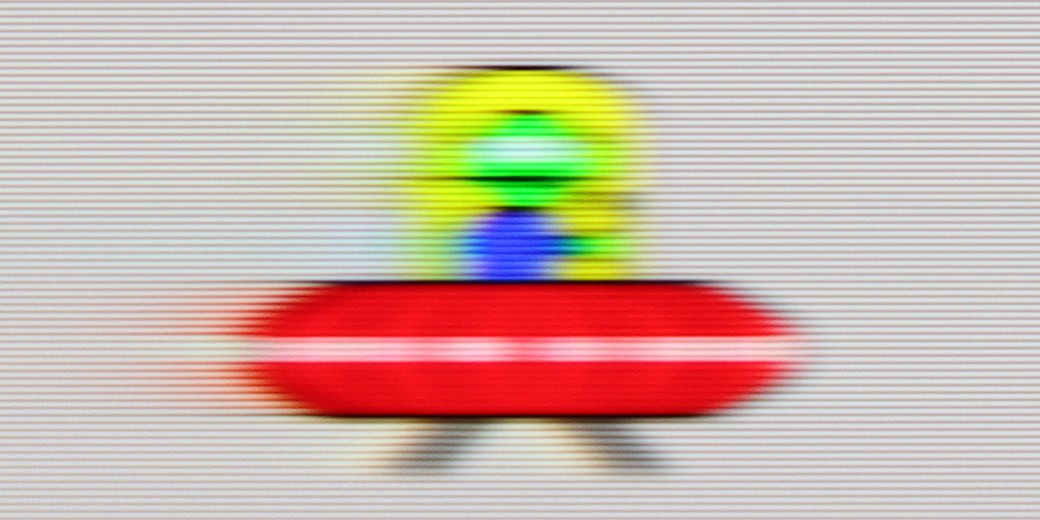
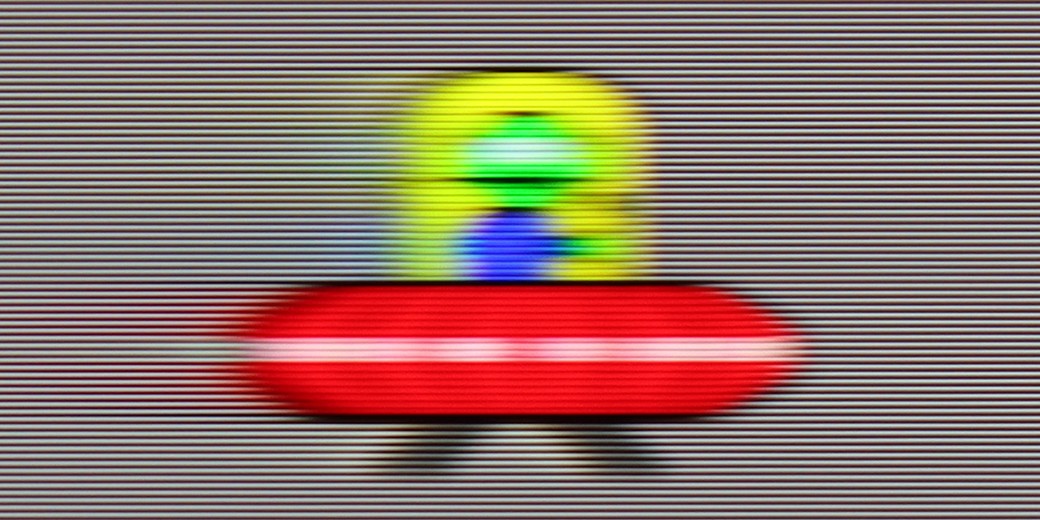
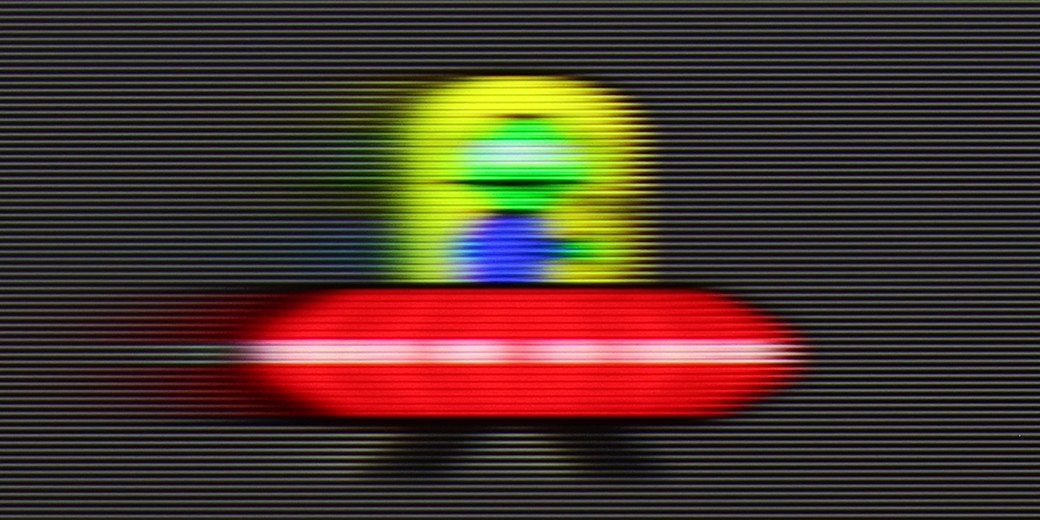

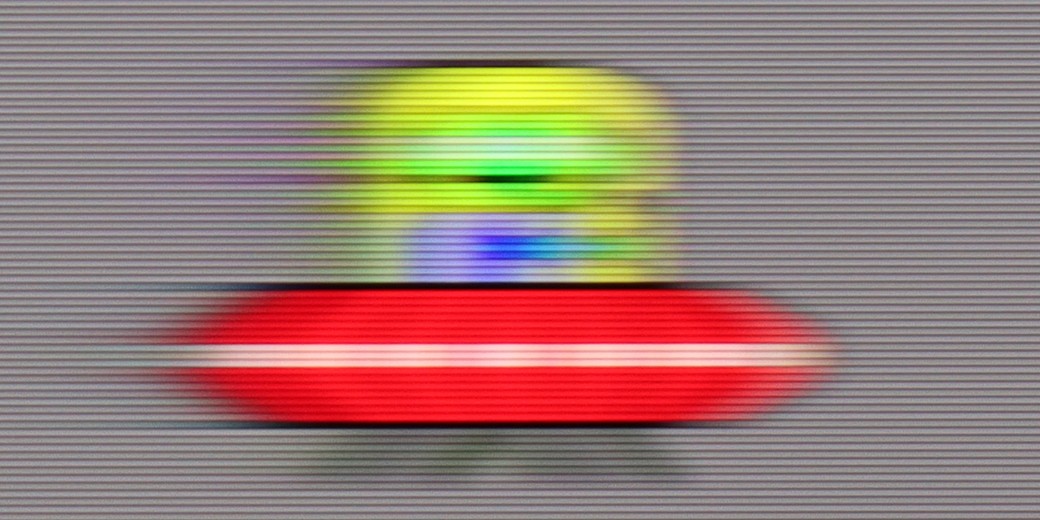
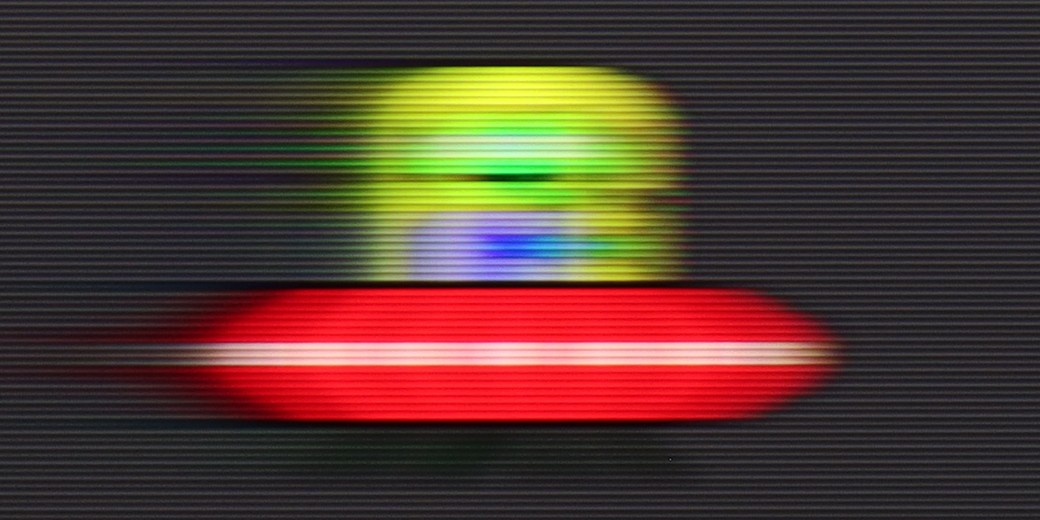
Blur (BFI function enabled):
Image flickers in this mode



Smużenie (4K 144Hz):

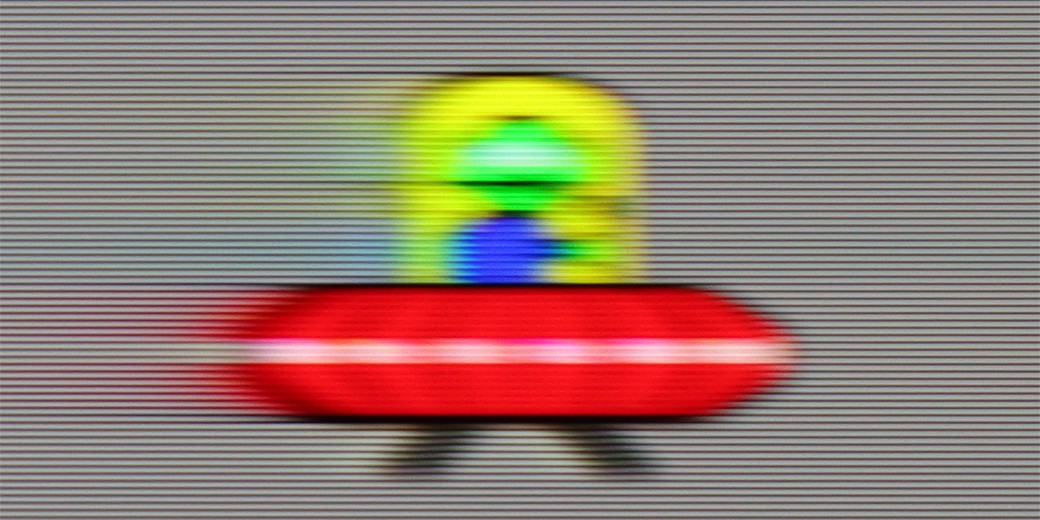
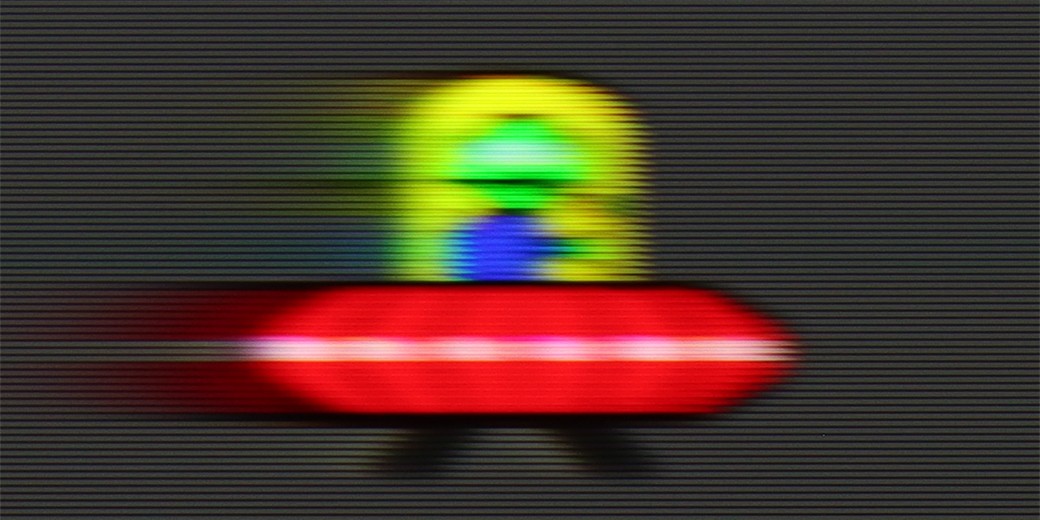
Smużenie (1080p@120Hz):

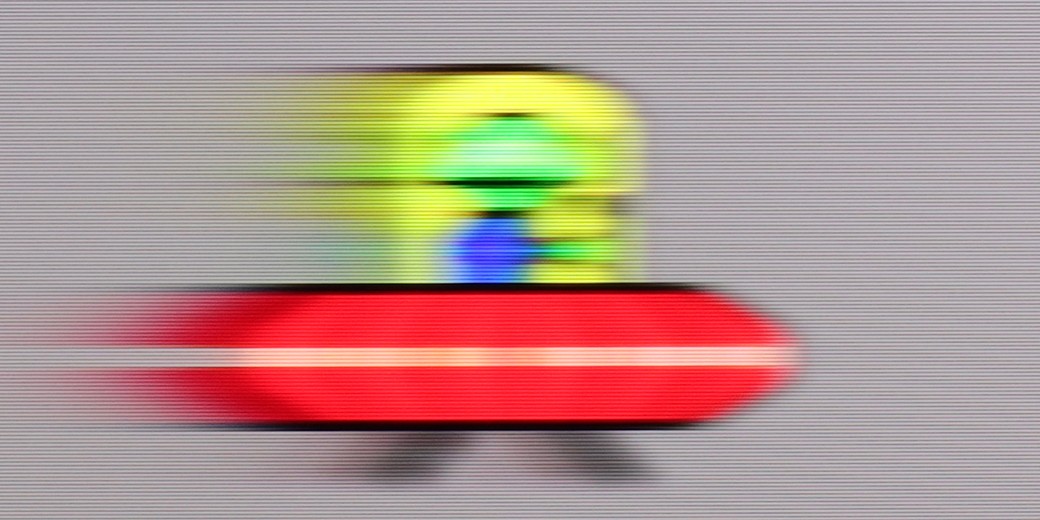
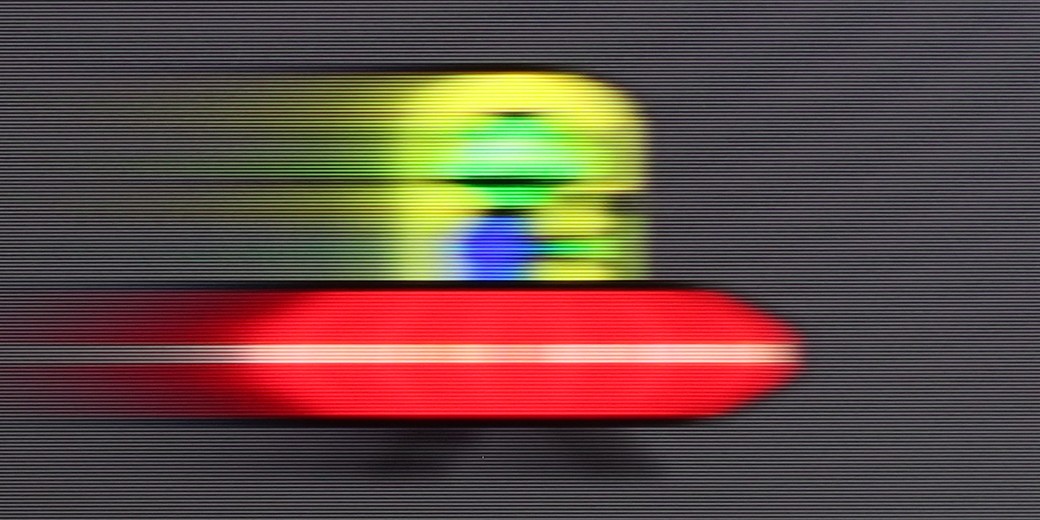
The QN70F is a television with a refresh rate of 144 Hz, which puts it at the forefront in terms of image smoothness. Whether we are watching dynamic sports broadcasts or playing on a console, the picture looks very good. There is no feeling of stuttering, chopping, or the typical "tearing" in fast motion that is common in lower-end models. Samsung also allows you to adjust the smoothness to your own preferences. In the picture clarity settings, we find options such as blur reduction and motion smoothing – each of which can be adjusted independently. This is especially useful when watching content with a lower frame rate and we want to give it a smoother, more cinematic character – or on the contrary, maintain the natural film "feeling" of 24 frames.
Hisense E7Q / E79Q is a television with a 60 Hz screen, so 4K sports fans may feel a slight disappointment – we simply won't see such smooth images here as in more expensive models with higher refresh rates. Fortunately, when it comes to movies, the situation is much better. Cinematic materials recorded at 24 frames per second can be displayed here using a motion smoothing feature, allowing the user to adjust the image to their preferences – more cinematic with a visible frame or smoother, in a theatrical style.
Console compatibility and gaming features
8.2/10
6.3/10
- ALLM
- VRR
- VRR range48 - 144Hz48 - 60Hz
- Dolby Vision Game Mode
- Correct implementation of HGIG
- 1080p@120Hz
- 1440p@120Hz
- 4K@120Hz
- Game bar
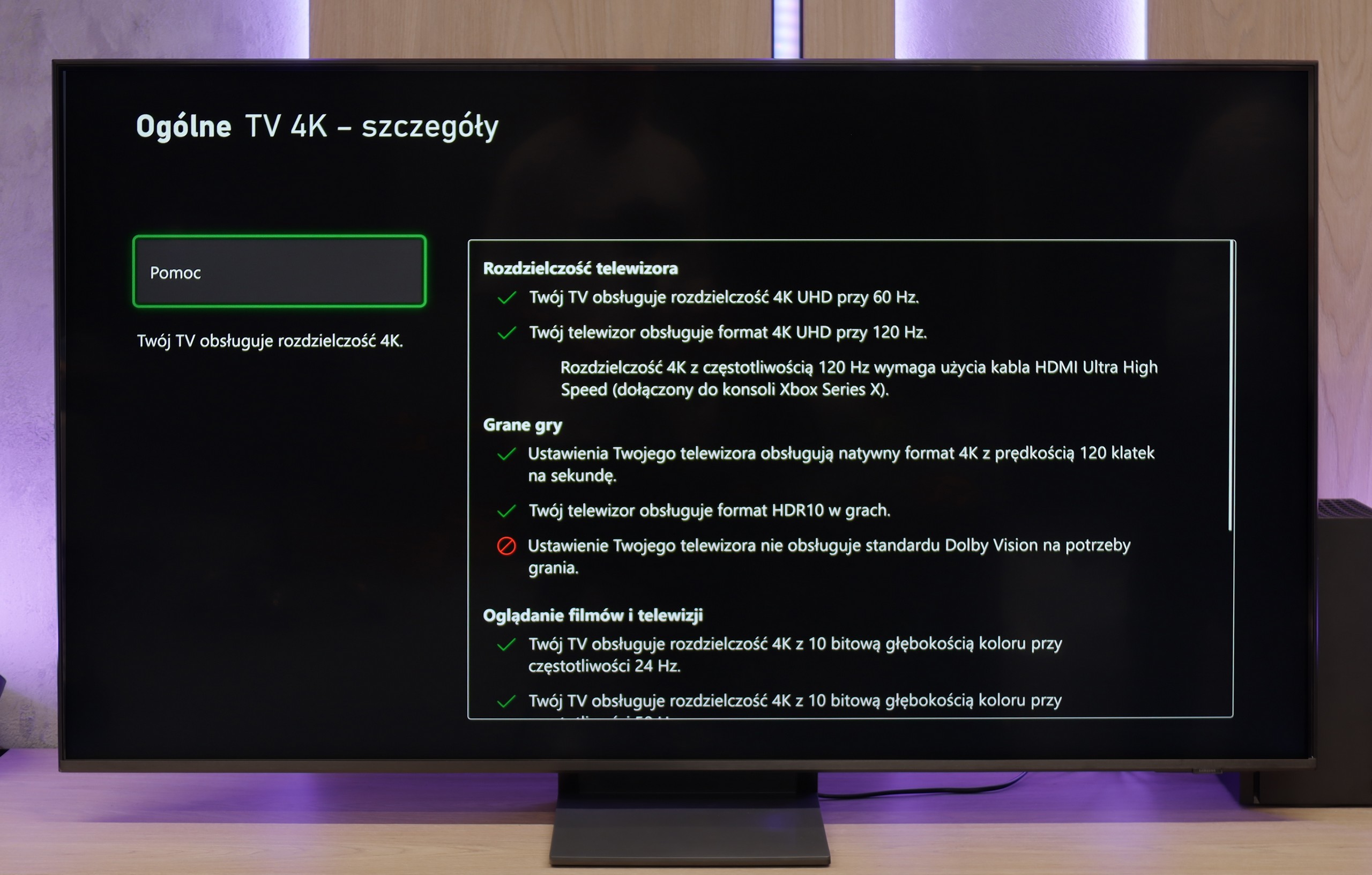
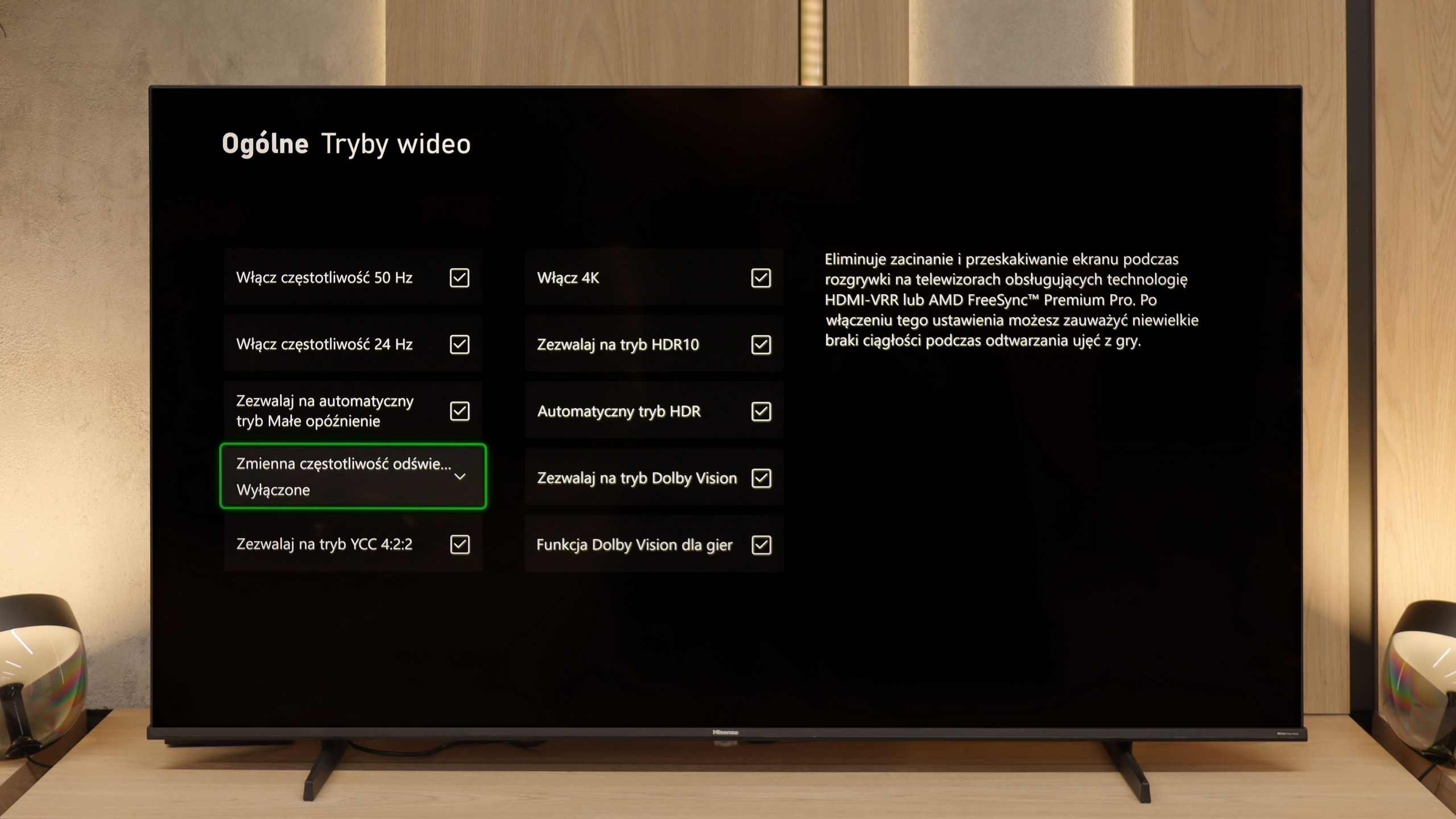
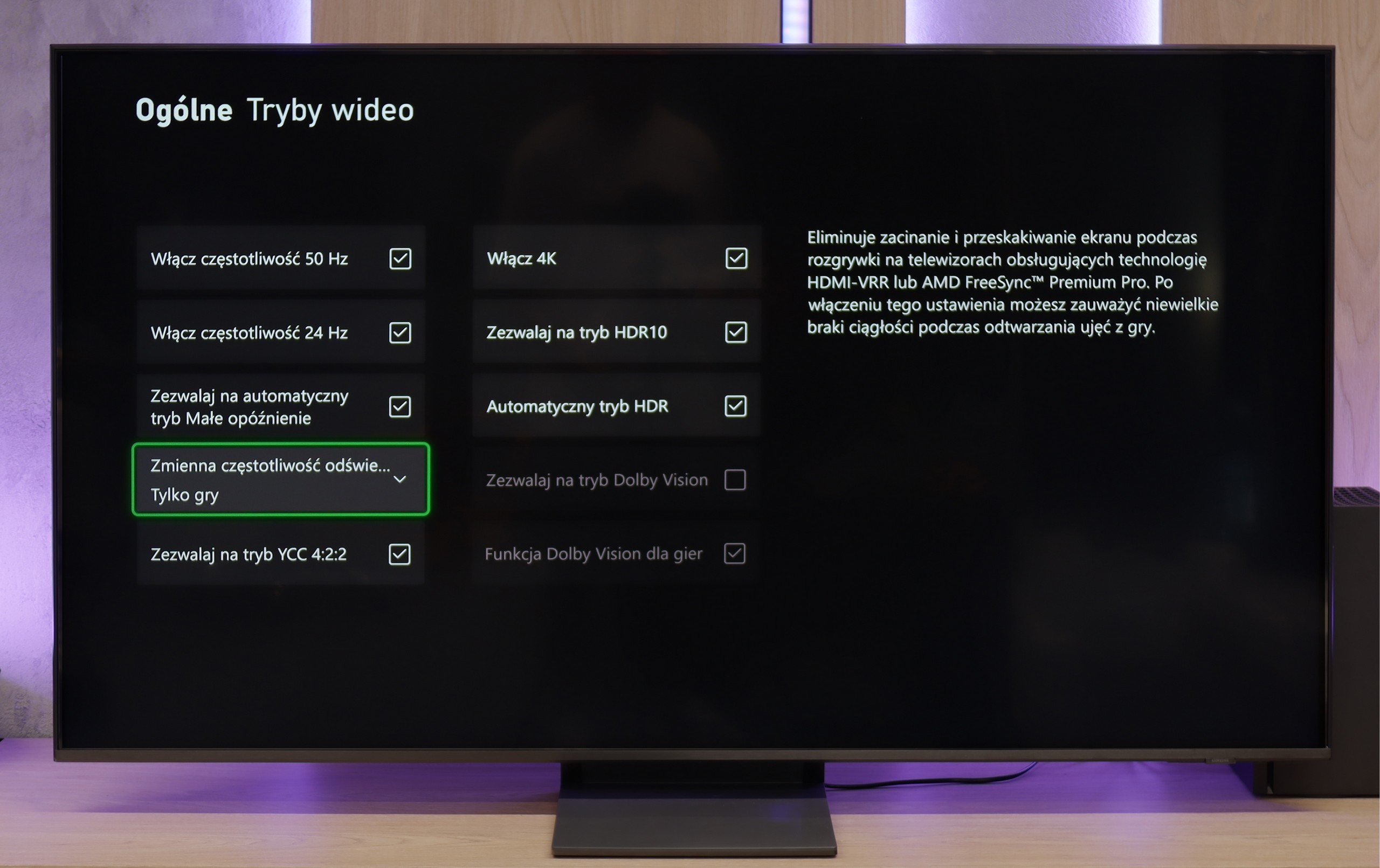
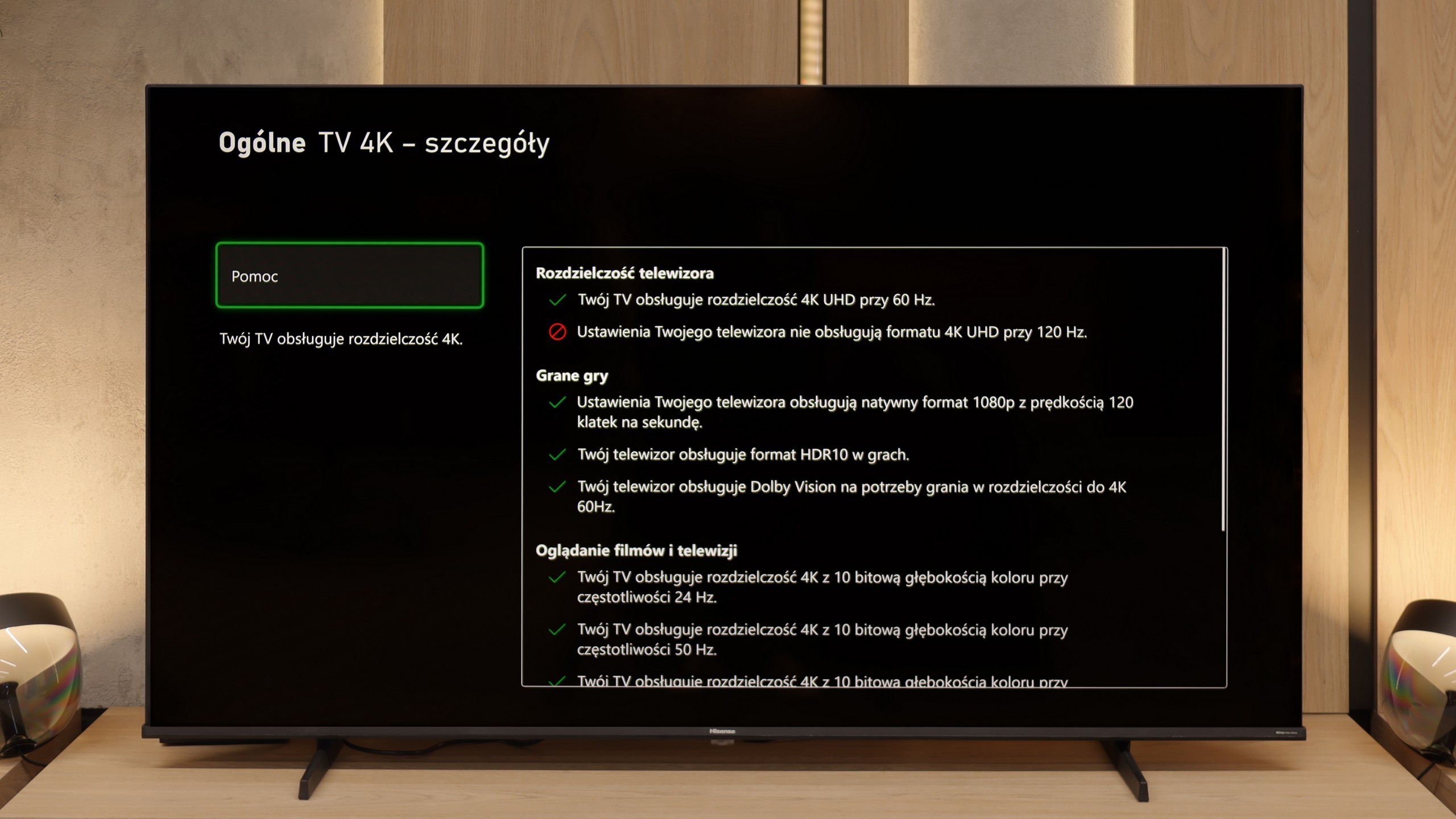
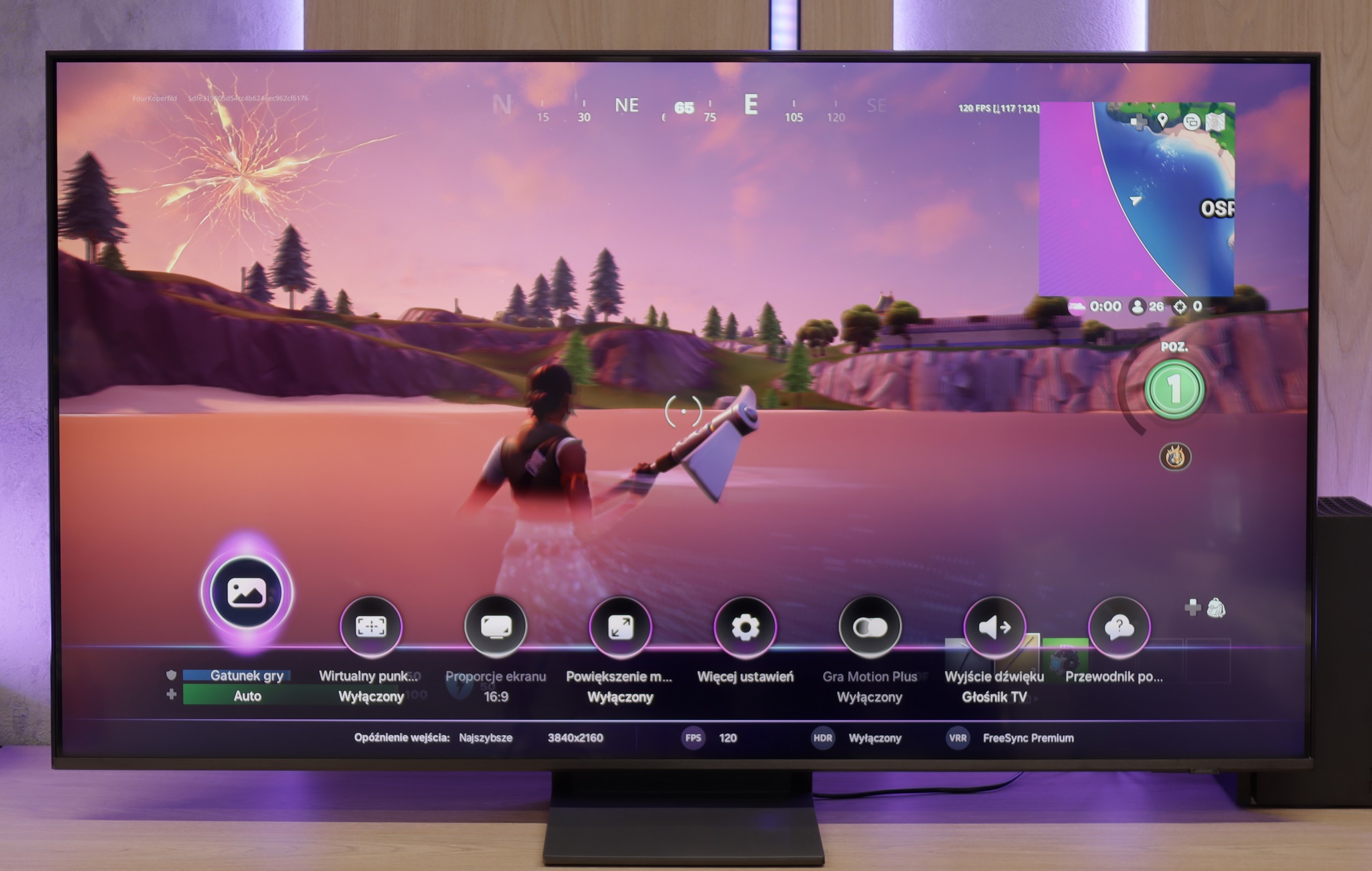
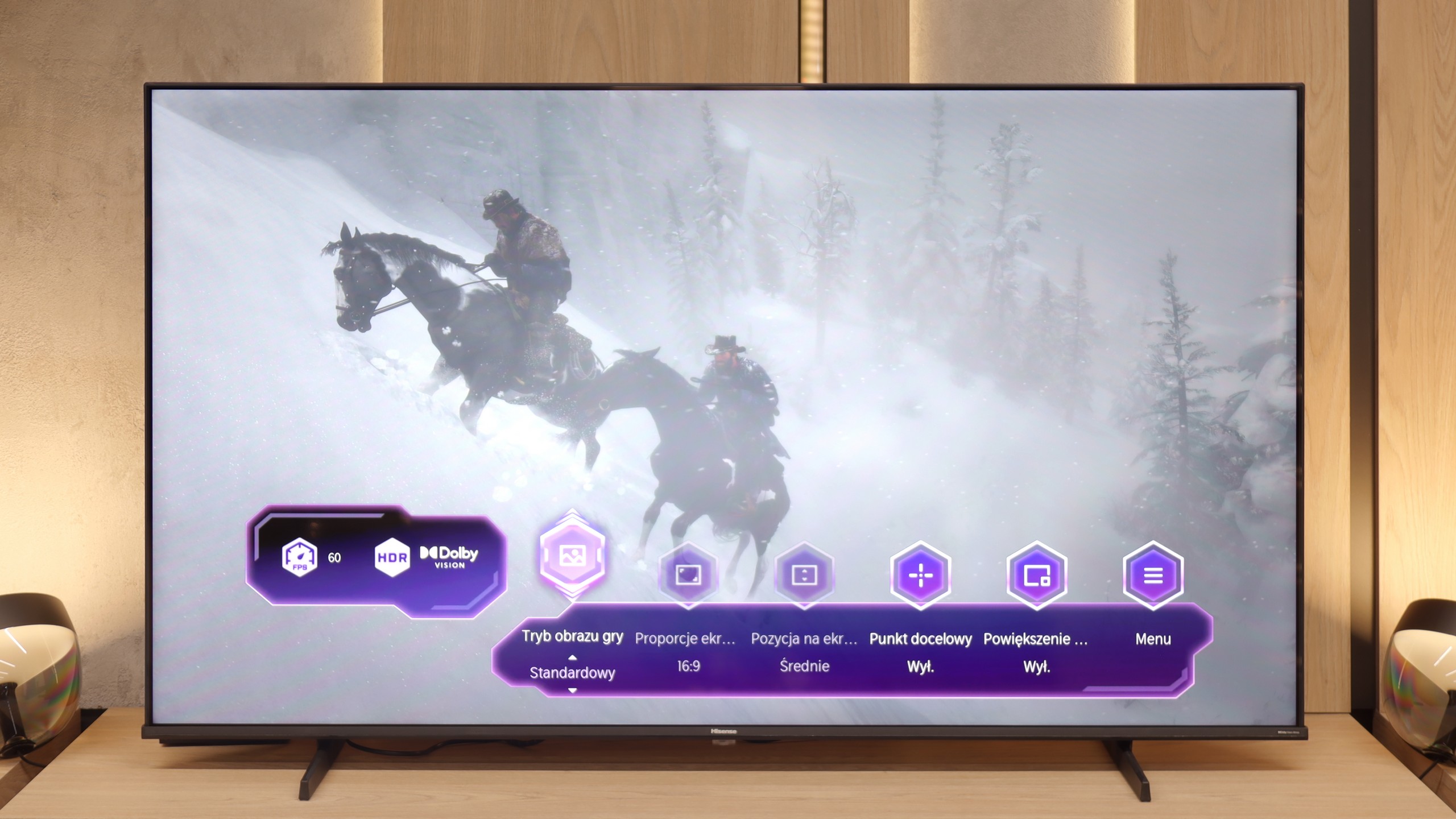
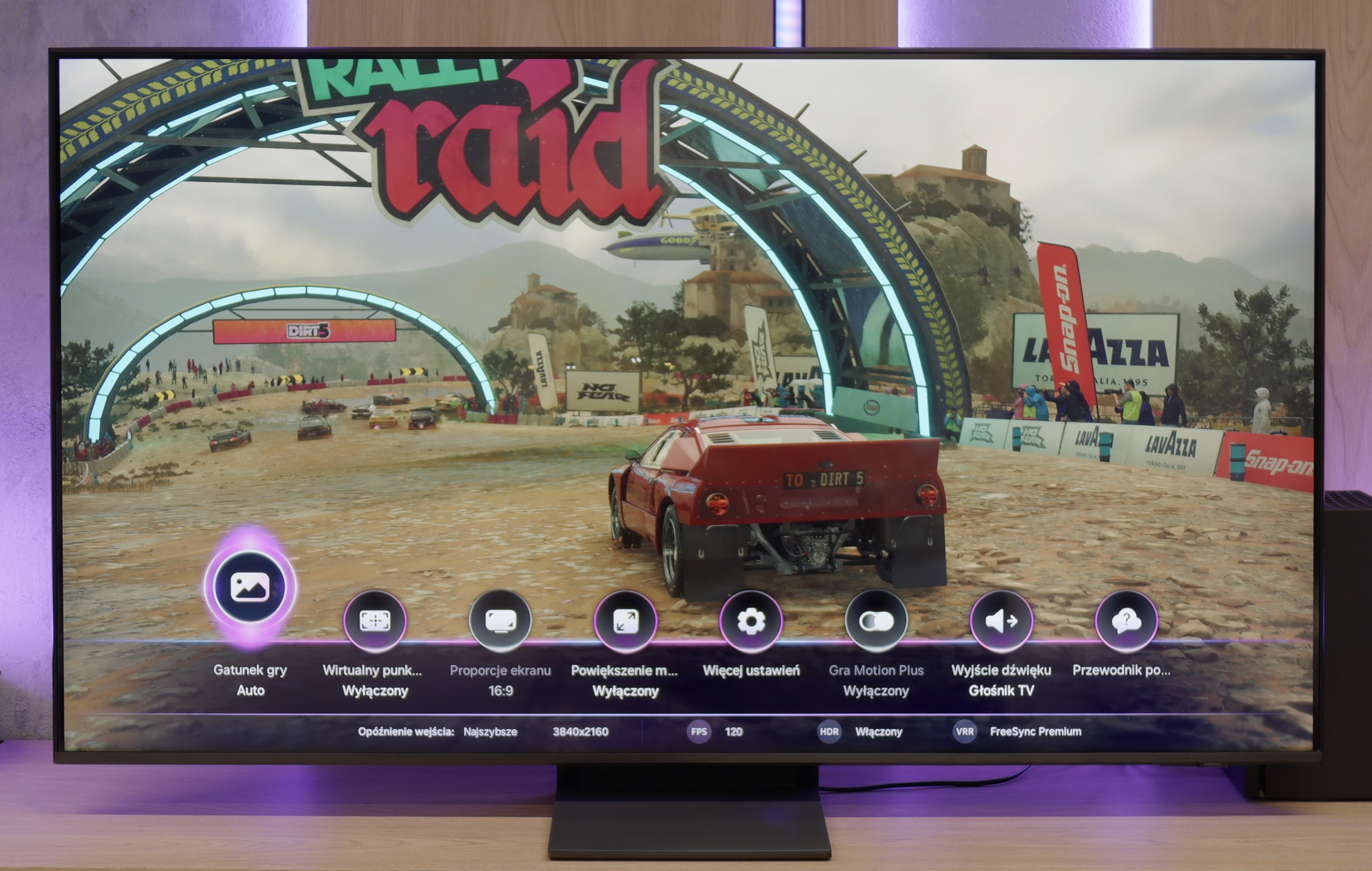
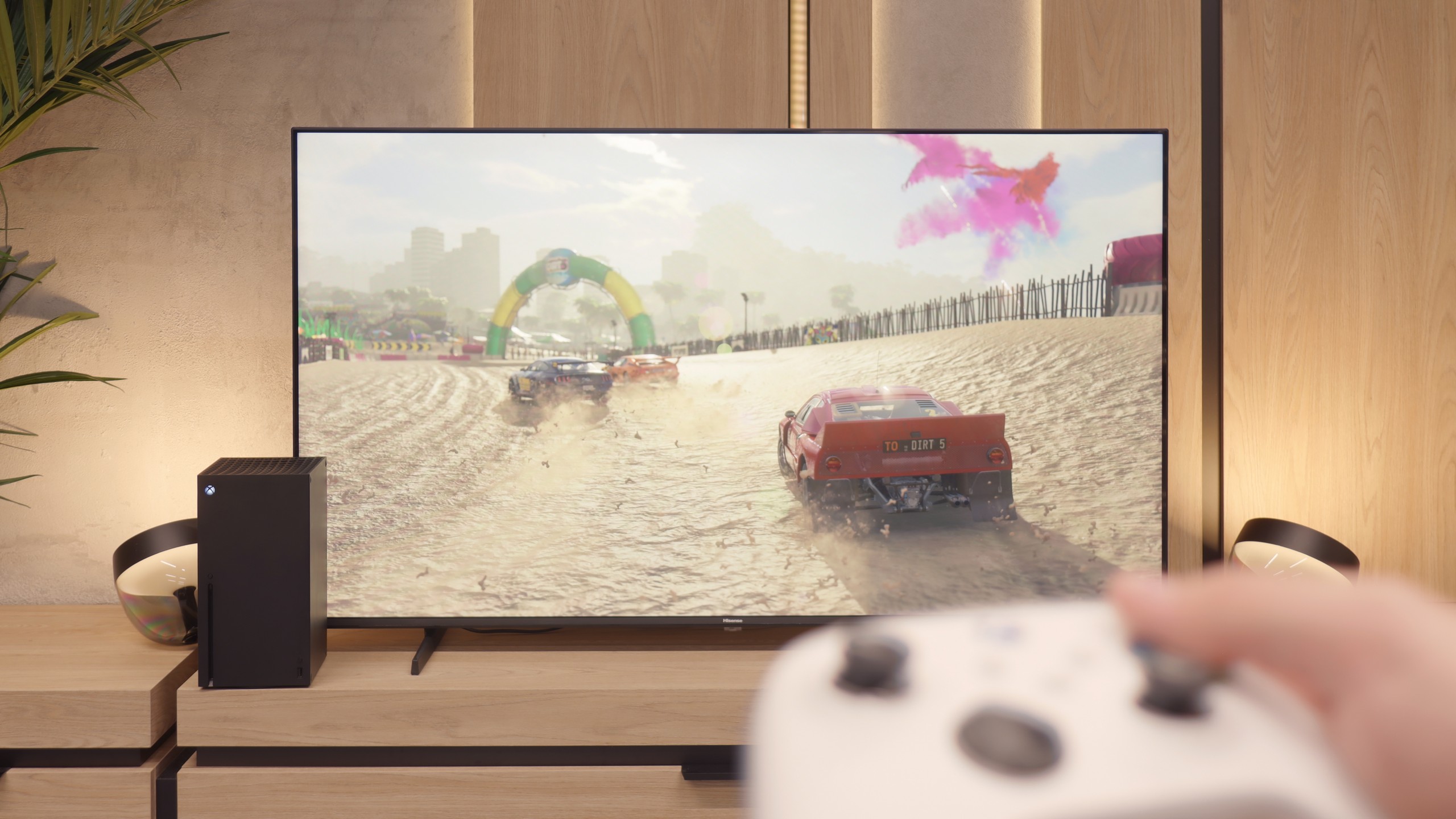
Samsung QN70F is truly a solid choice for gamers. Here we have as many as four HDMI 2.1 ports with full bandwidth of 48 Gbps, which means full support for gaming in 4K at 144 Hz refresh rate. In addition, we have all the basic features we expect today: auto low latency mode (ALLM), variable refresh rate (VRR), and a very well-designed, intuitive Game Bar with information about the mode, resolution, and frame count.
It's also worth highlighting the Game Motion Plus feature, which allows you to add artificial frames to games running at 60 fps or less. It works surprisingly well and in many titles – especially those where consoles struggle to maintain a stable framerate – it improves gameplay smoothness without significant lag.
Unfortunately, there are also some drawbacks. The lack of support for Dolby Vision mode is not surprising – it's a standard for Samsung. But the much bigger disappointment is the absence of the HGiG feature. What's worse, it was removed in a software update, leaving users who previously used it quite shocked. Without HGiG, you can't manually set the maximum HDR brightness from the console, which results in some games looking slightly washed out – especially if the TV misinterprets the tonal range. Why did Samsung, a brand that has set standards in gaming features for years, decide to take such a step? It's hard to say. At the time of writing this review, the tested TV was running on software version 1110 – and frankly, if you care about full support for gamers, it's better to temporarily hold off on updates.
Hisense E7Q / E79Q is truly a successful television for gamers, even though it doesn't support 4K signal at 120 Hz. However, the manufacturer has included a set of features that until recently could only be found in more expensive models. There is ALLM, or automatic switching to low-latency mode, which allows the television to activate game mode with very low input lag. We also have VRR, functioning up to 60 Hz – this may not seem impressive on paper, but in practice, it is fully sufficient, as most games on consoles do not exceed this limit. All these settings can be quickly found in the Game Bar panel, a convenient menu created specifically for gamers. From this level, you can change picture modes, turn on a frame rate counter, or even… a crosshair on the screen – in the Vidaa system humorously named "target point," which is a result of awkward translation by the Chinese manufacturer.
Particularly praiseworthy is the ability to play in 1080p at 120 Hz, which realistically improves the smoothness and responsiveness of the image. This way, if someone wants to play a few titles at a higher refresh rate, they can simply lower the resolution and enjoy significantly smoother motion. Despite the lack of 4K@120Hz, Hisense E7Q / E79Q really performs well as a television for gamers – especially those who are not looking for perfection, but a solid and fast screen for everyday gaming.
Input lag
10/10
10/10
SDR
HDR
Dolby Vision
QN70F does not disappoint in terms of response time either. For 120 Hz materials, input lag stays around 8 ms, which can be considered a very good result – especially in the context of online competition or fast-paced action games. The screen responds to controller movements almost instantly, without any noticeable delay. This allows for smooth and comfortable gameplay, even in more demanding titles. In this category, Samsung still maintains a high standard, and it’s hard to find anything that could raise concerns.
In games, the easiest thing to notice is how fast (or slow) the TV is – and the Hisense E7Q / E79Q passes this test without a hitch. After just a few minutes of playing, you can feel that the response to controller movements is instantaneous, without that characteristic delay that can ruin even the best match in FIFA or a critical exchange in a fighting game. In game mode, the E7Q / E79Q operates with a delay of less than 15 ms, which means that there is virtually no gap between pressing a button and seeing the reaction on the screen. This is a level that even more expensive models would be proud of. And it's precisely for this responsiveness – perhaps more than for the picture or extras – that this TV really deserves praise.
Compatibility with PC
8.2/10
3/10
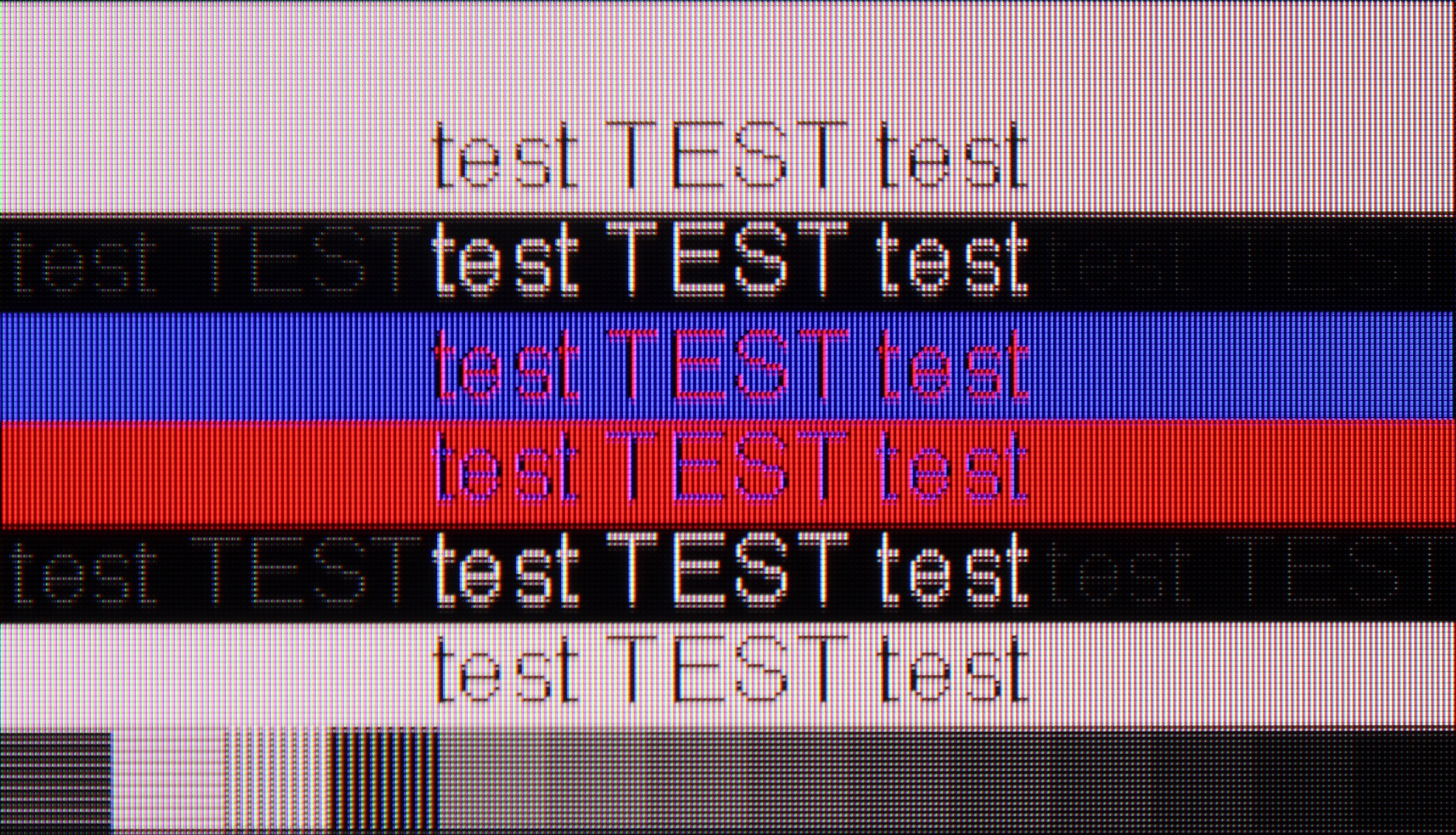
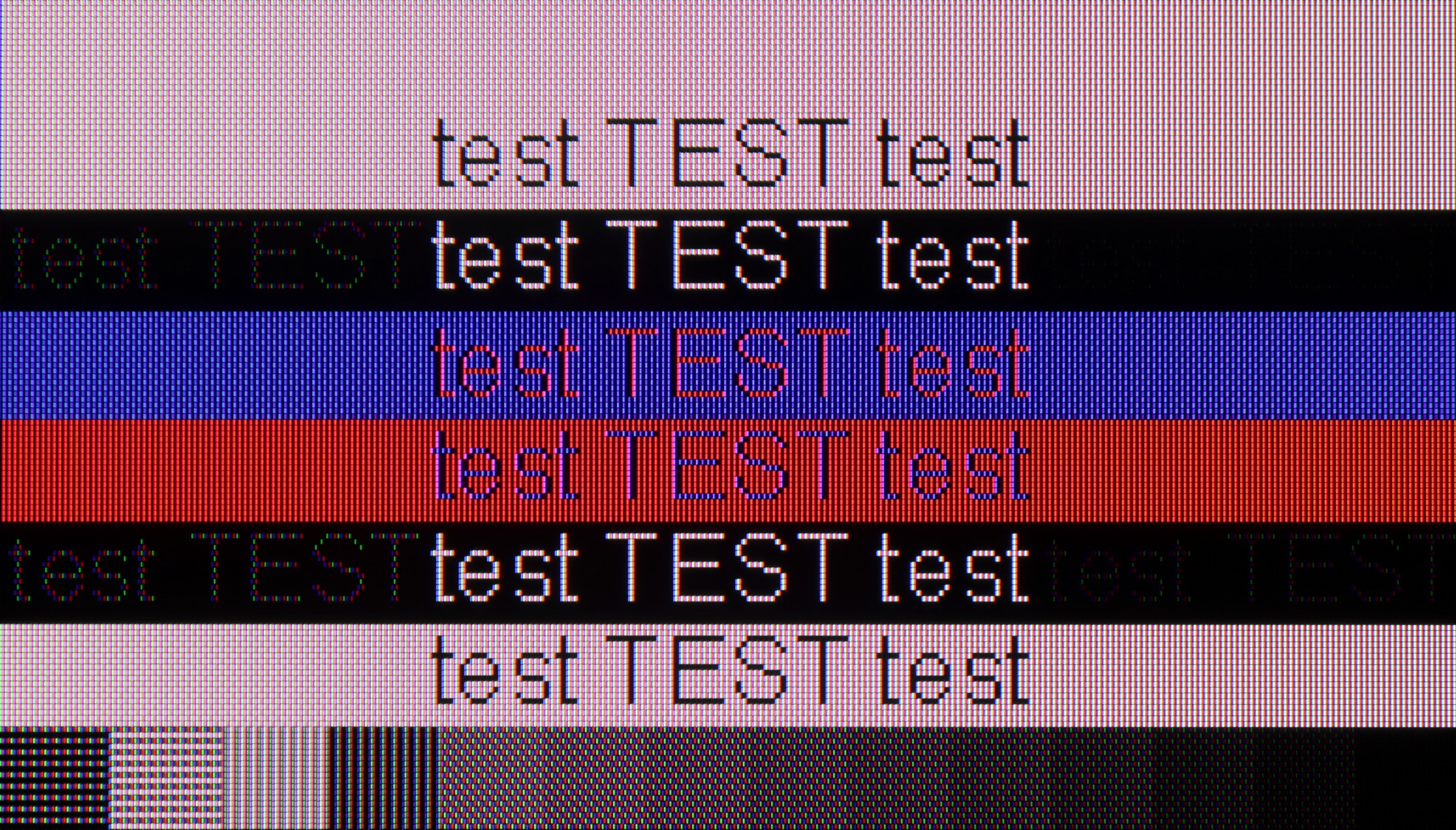
Let's start with the best aspect when it comes to connecting the QN70F to a computer – that is gaming. The 144 Hz refresh rate, support for G-Sync compatible VRR, and very low input lag are the recipe for an almost perfect screen for PC gamers. In this role, the QN70F truly does not disappoint – games look smooth, responsiveness is at a very high level, and everything operates stably.
However, the performance when it comes to text work is somewhat lacking. At a 4K resolution and 144 Hz refresh rate, there is a noticeable lack of sharpness in the text outlines – the text can appear slightly blurred, with a slight "layering" of the outlines. This is not a problem that disqualifies the usability of the QN70F as a monitor, but those planning to do office work or text editing on this screen should keep this in mind.
In terms of collaboration with a PC, the Hisense E7Q / E79Q unfortunately does not impress. Yes, the television supports full chroma sampling 4:4:4, so text and fonts are quite readable, but that’s where the list of advantages pretty much ends. The screen has a significant issue with dithering, which in practice looks very unpleasant – as if the surface of the image was gently shimmering with colors. This is best seen with dark letters on a gray background – instead of neutral shades of fonts, there are delicate flashes of blue, green, and red, reminiscent of a rainbow effect. After prolonged use at the computer, it can strain the eyes and reduce comfort. On the positive side, there is support for frame synchronization and the ability to operate at 120 Hz at a lower resolution, which may be a small consolation for gamers. However, as a typical PC monitor, the E7Q / E79Q performs rather mediocrely.
Viewing angles
3.1/10
3.2/10
As for the VA panel, the viewing angles on the QN70F are typical – meaning rather average. The image quickly loses contrast and saturation when we start looking at the screen from a sharper angle. Compared to IPS panels, it's definitely weaker. On the other hand – it is precisely because of this panel that we gain better black levels and higher contrast when viewing straight on, which for many users will be more important than wide visibility from the sides.
The Hisense E7Q / E79Q has typical VA panel weak viewing angles. Straight on, the picture looks very good – black is deep, and contrast is high. However, just sitting slightly to the side causes the situation to change quickly. At an angle of about 45 degrees, brightness drops by about 73%, and colors noticeably lose saturation. This is a typical compromise we have to make when choosing a TV with this type of panel instead of an IPS panel. There, the viewing angles are much better, but the black is much worse.
TV efficiency during daytime
6.3/10
5.2/10
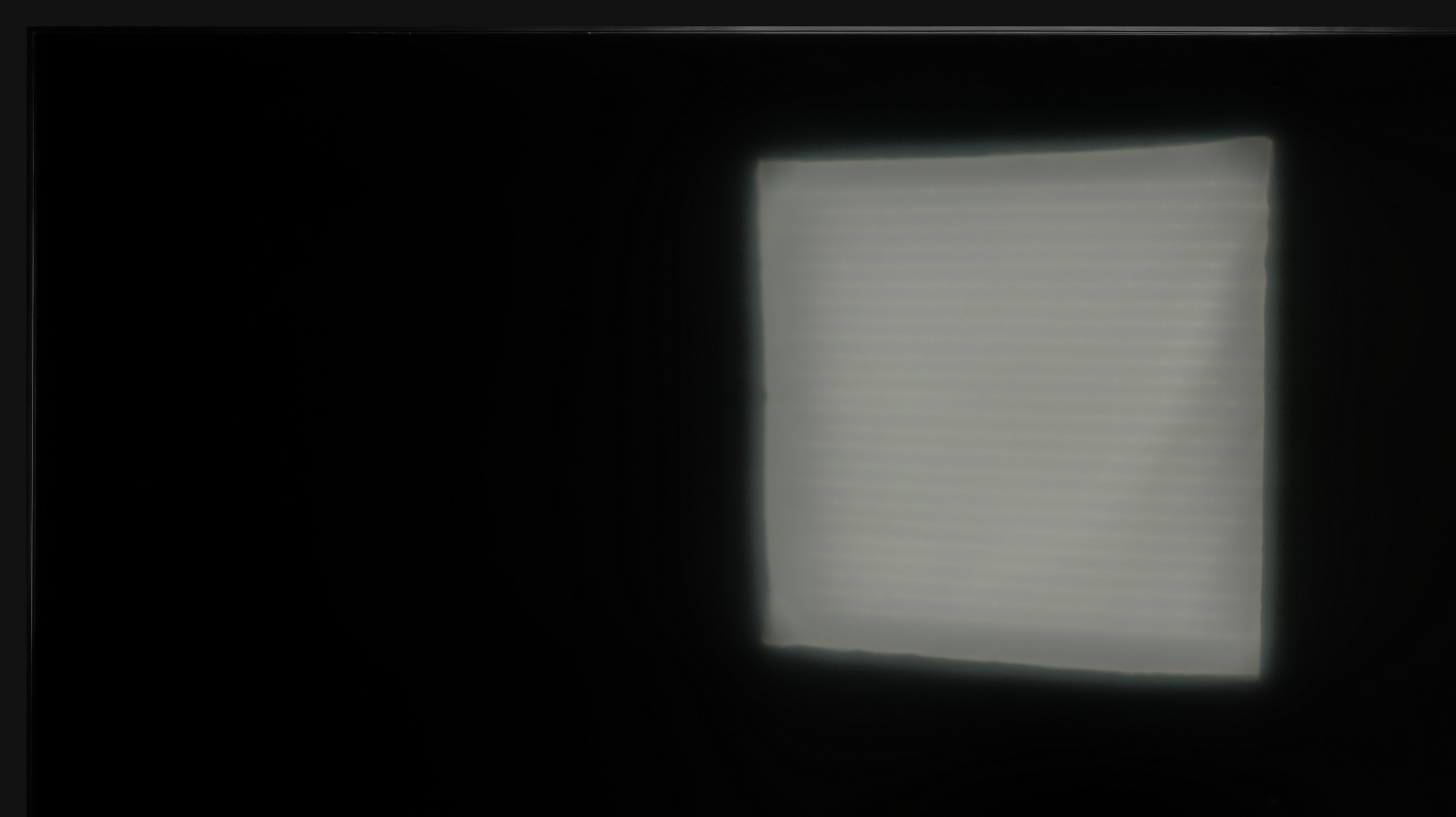
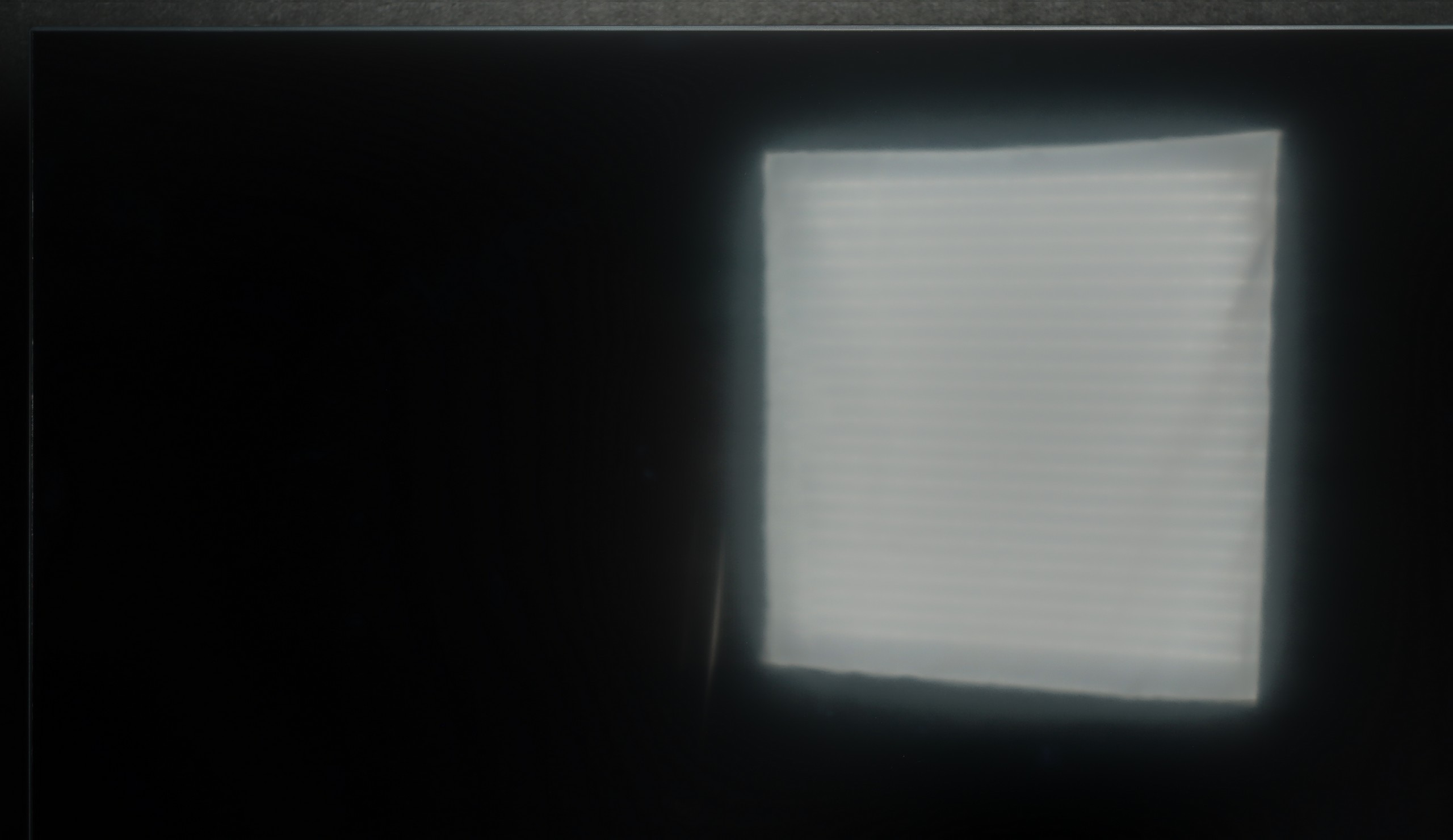


Matrix brightness
Average luminance SDR
Hisense E7Q / E79Q: 371 cd/m2
Samsung Neo QLED QN70F / QN74F / QN77F: 492 cd/m2
The QN70F handles a bright living room without any problems. The screen has a satin finish that effectively reduces reflections, so there's no need to immediately draw the curtains to see something. Even when there’s a lot of light in the room – for example, near a window on the side – the image still looks sharp and colorful. Brightness is also at a solid level. In SDR mode, the television averages around 500 nits, which is more than enough for daytime viewing. It may not be at the level of top models, but in practice – for everyday watching of TV, sports, or YouTube – it performs very well.
Hisense E7Q / E79Q performs best in moderately bright living rooms. Its brightness ranges from 350 to 380 nits, so in typical home conditions, the picture looks good, but in very sunny rooms, it begins to lose clarity. It is simply not a screen for interiors with large windows or strong daylight. On the positive side, it's worth mentioning the satin coating of the panel, which effectively reduces reflections – both from lamps and from windows. As a result, even if the room is not in semi-darkness, the image remains quite clear.
Details about the matrix
Subpixel Structure:
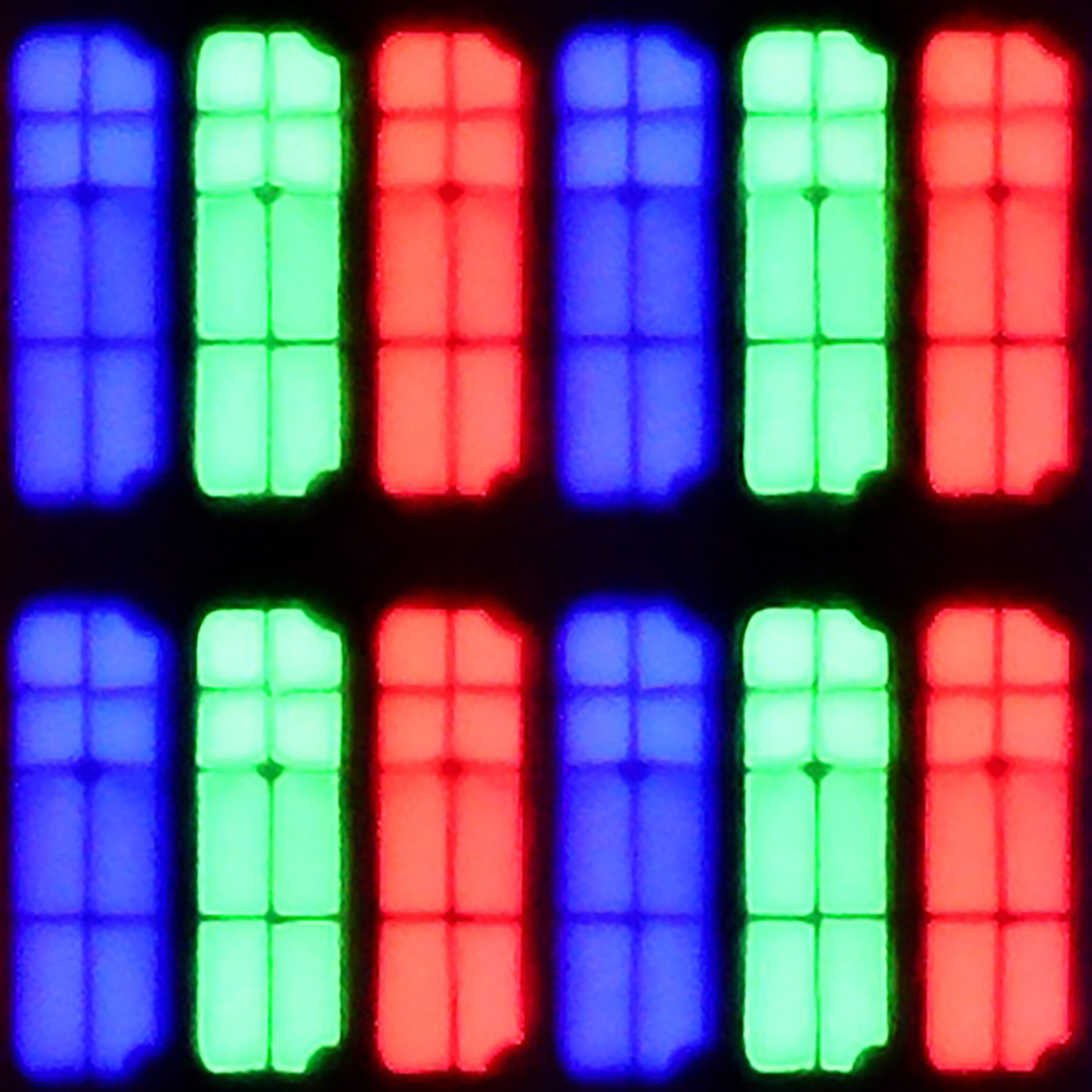
Panel uniformity and thermal imaging:
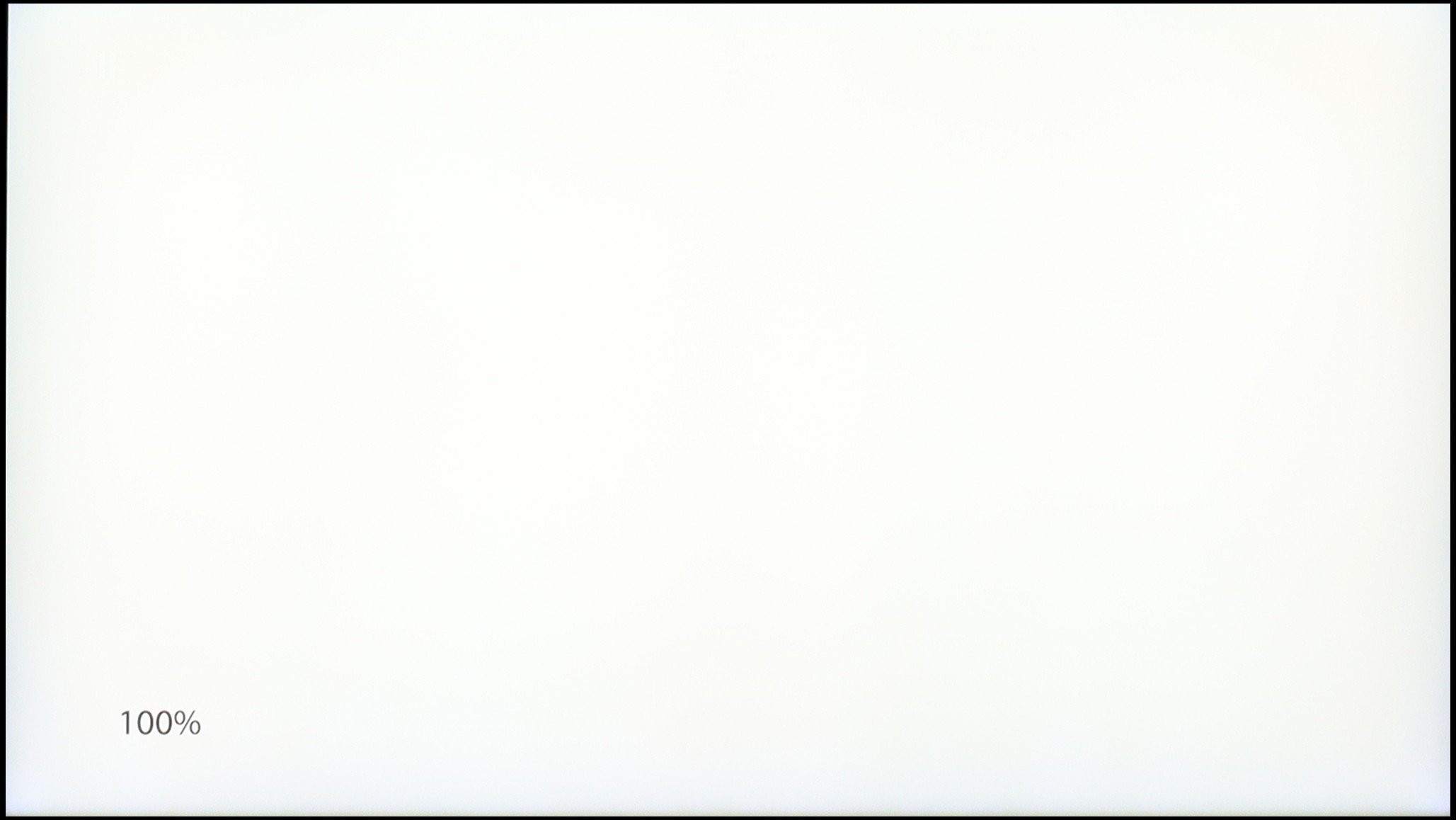
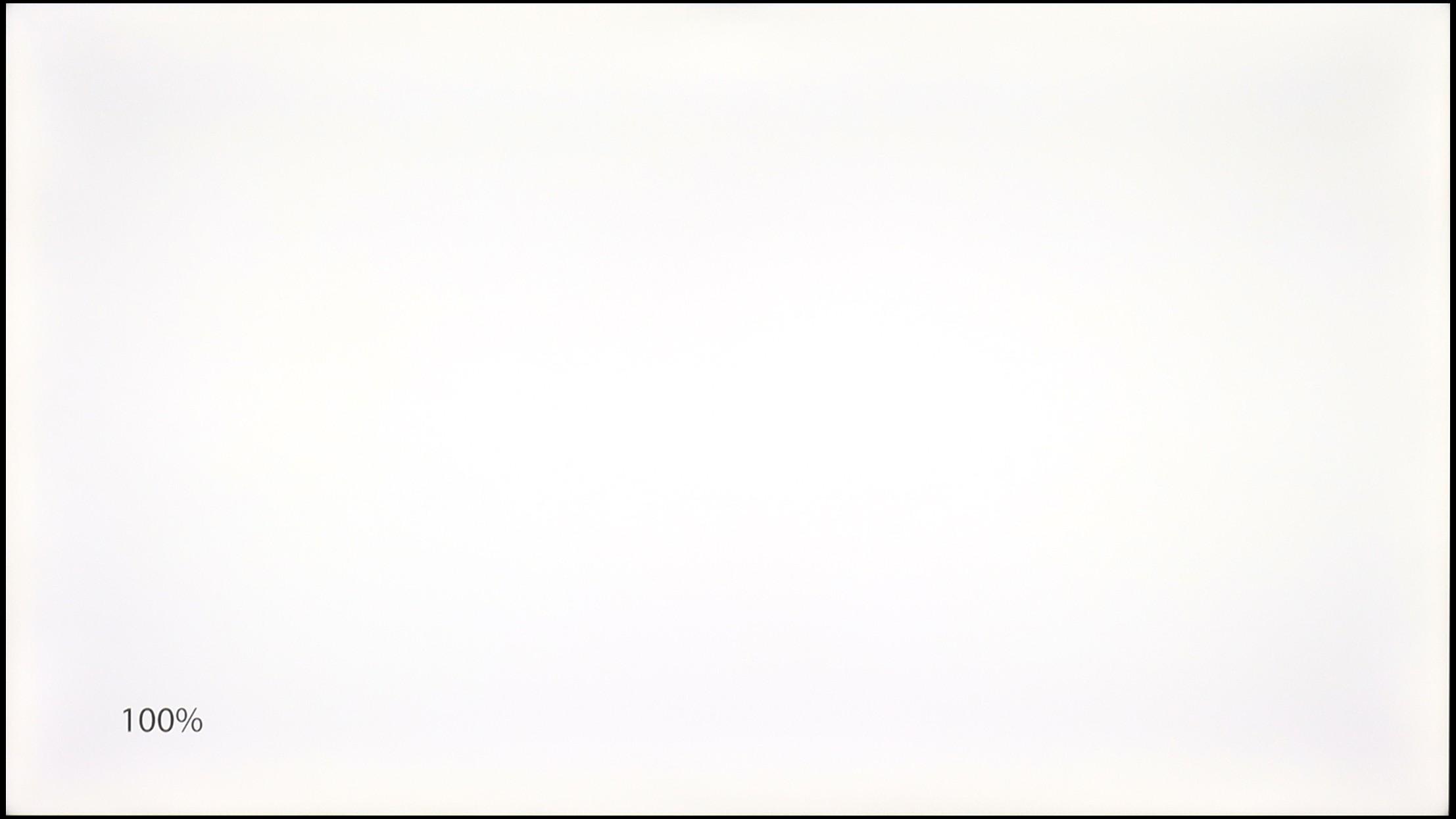
Samsung Neo QLED QN70F / QN74F / QN77F
Hisense E7Q / E79Q
TV features
7.2/10
8.7/10
- HDMI inputs0 x HDMI 2.0, 4 x HDMI 2.1 48Gbps3 x HDMI 2.0, 0 x HDMI 2.1
- Other inputsComponent (YPbPr)
- OutputsToslink (Optical audio), eARC (HDMI), ARC (HDMI)Toslink (Optical audio), eARC (HDMI), ARC (HDMI), Mini-Jack (Headphones)
- Network InterfacesWi-Fi 2.4GHz, Wi-Fi 5GHz, Ethernet (LAN) 100MbpsWi-Fi 2.4GHz, Wi-Fi 5GHz, Ethernet (LAN) 100Mbps
- TV receptionDVB-T, DVB-T2, DVB-S, DVB-S2, DVB-CDVB-T, DVB-T2, DVB-S, DVB-S2, DVB-C
Classic features:
- Recording to USB (terrestrial TV)
- Recording programming
- Picture in Picture (PiP)
- RF remote control (no need to aim at the screen)
- Backlit remote control
- Teletext
- Audio only mode
- Bluetooth headphones support
- Simultaneous Bluetooth headphones & TV audio
Smart features:
- AirPlay
- Screen mirroring (Windows Miracast)
- Voice search
- Voice search in native language
- Ability to connect a keyboard and mouse
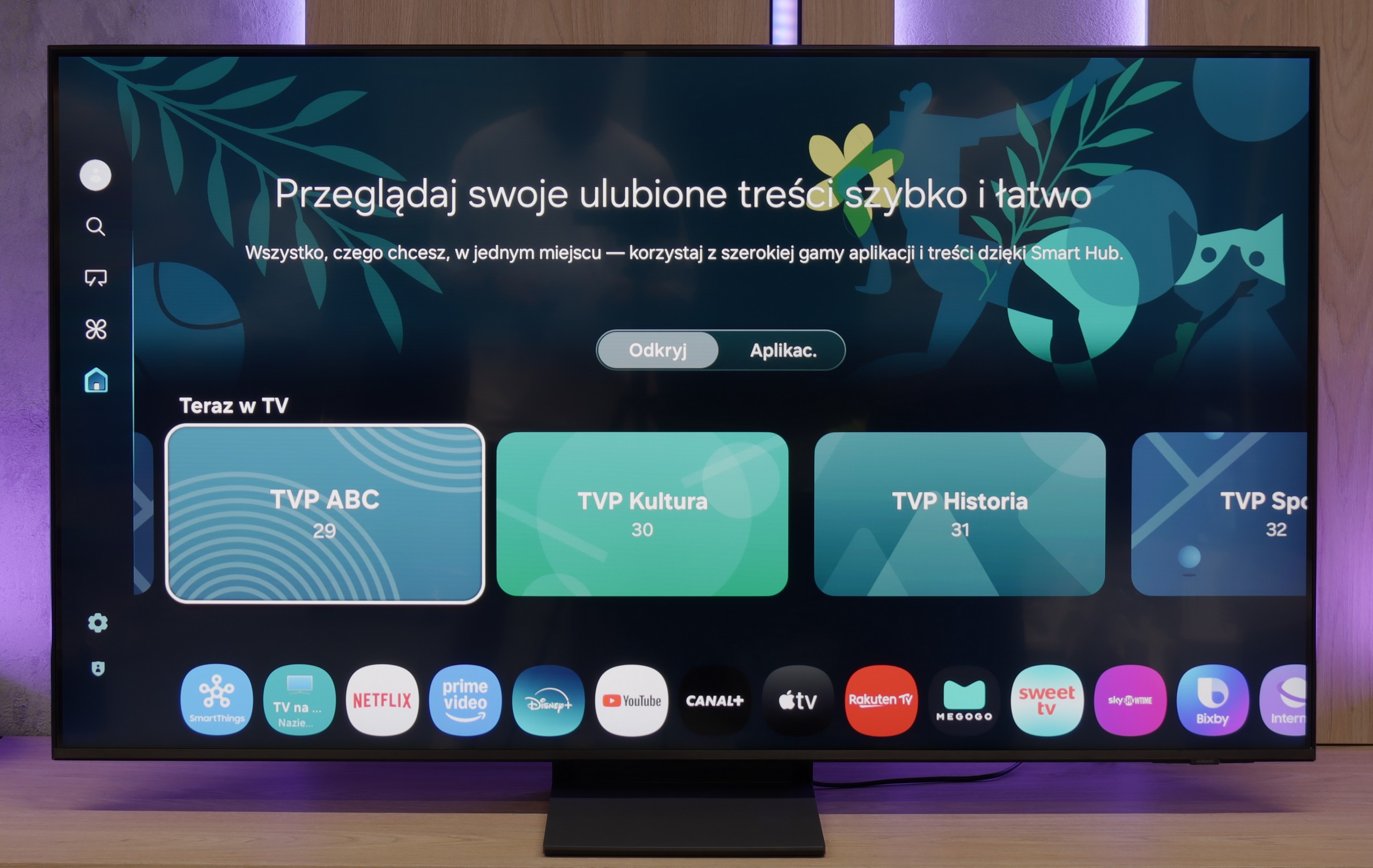
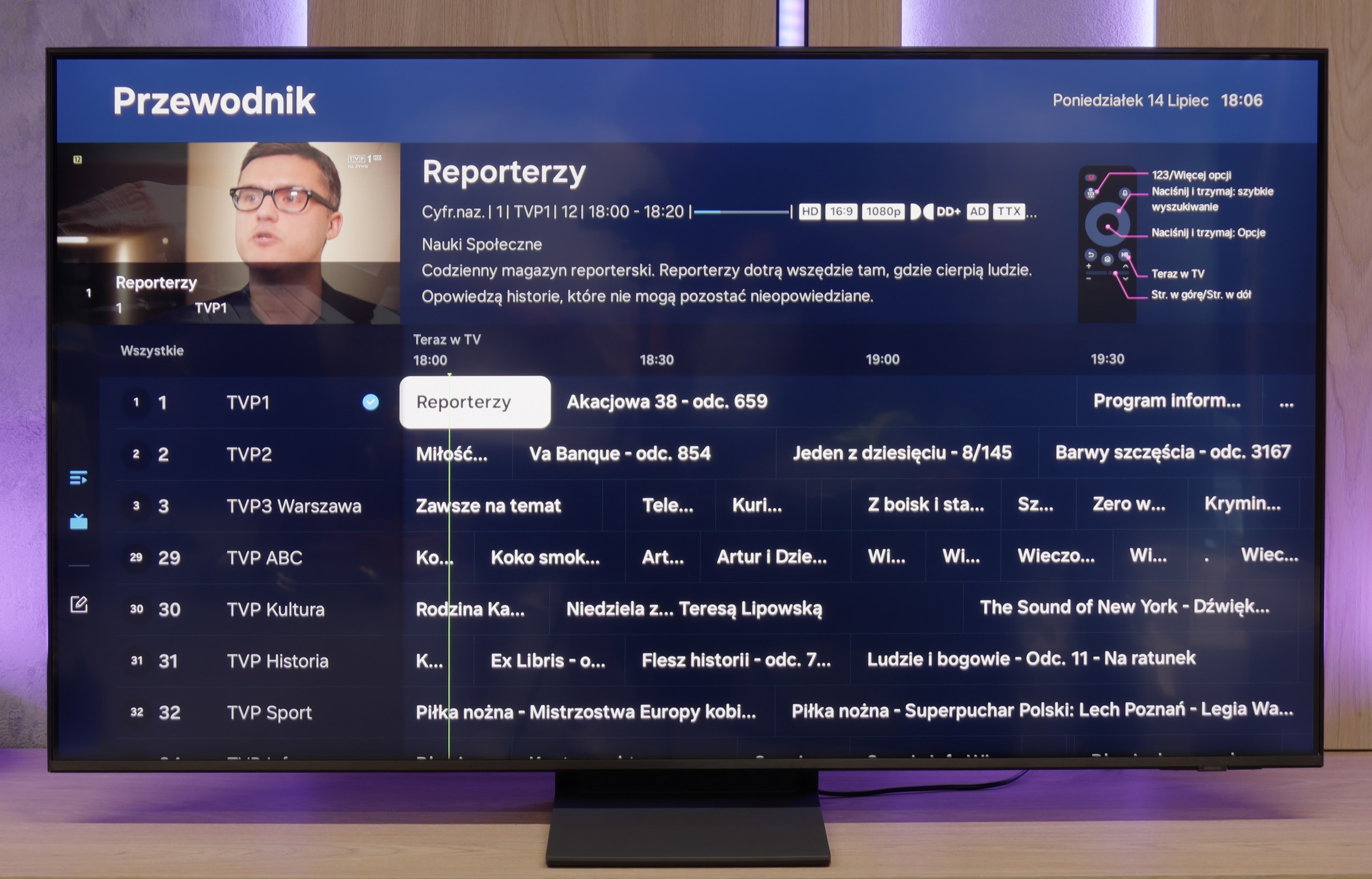
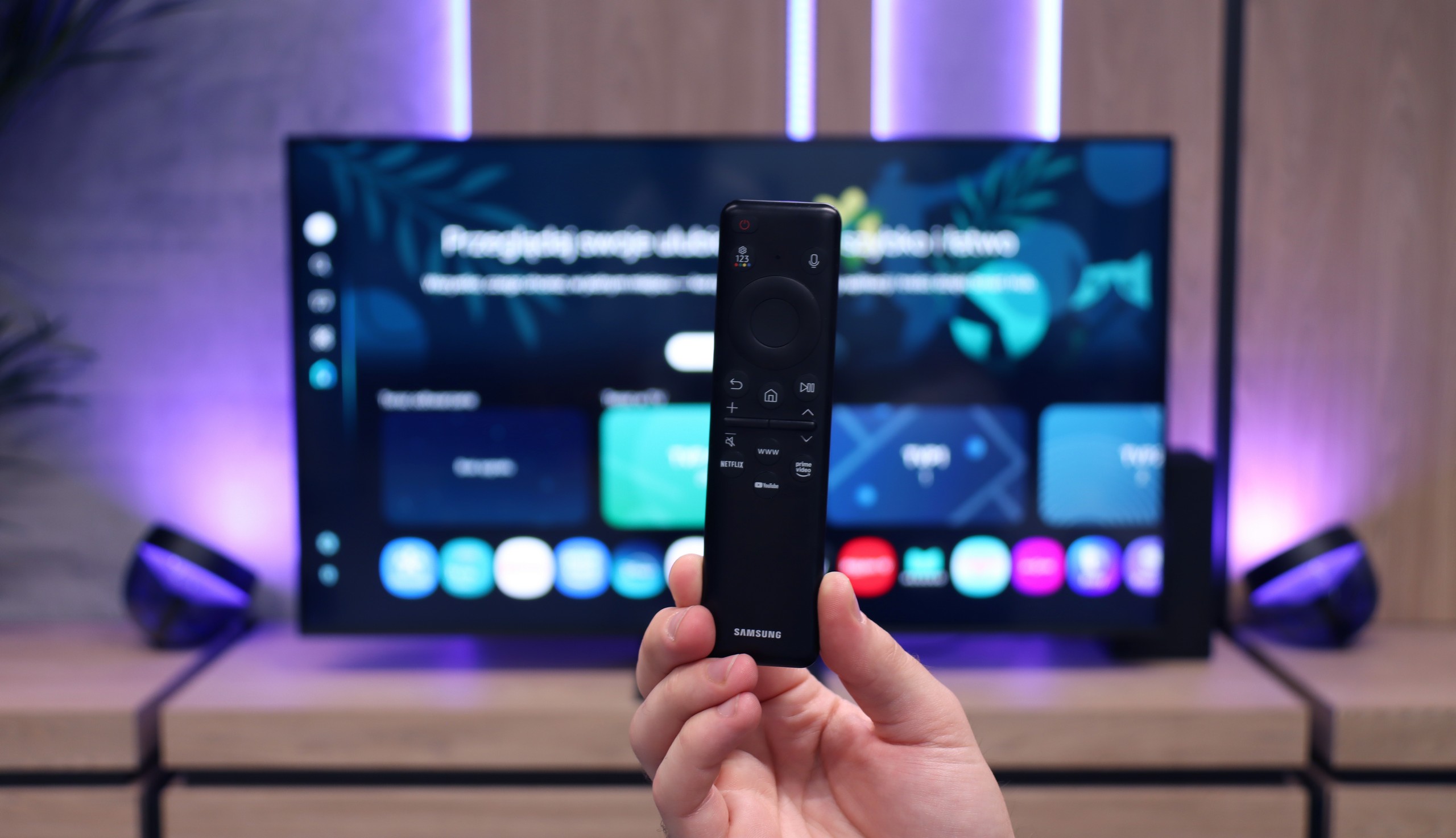
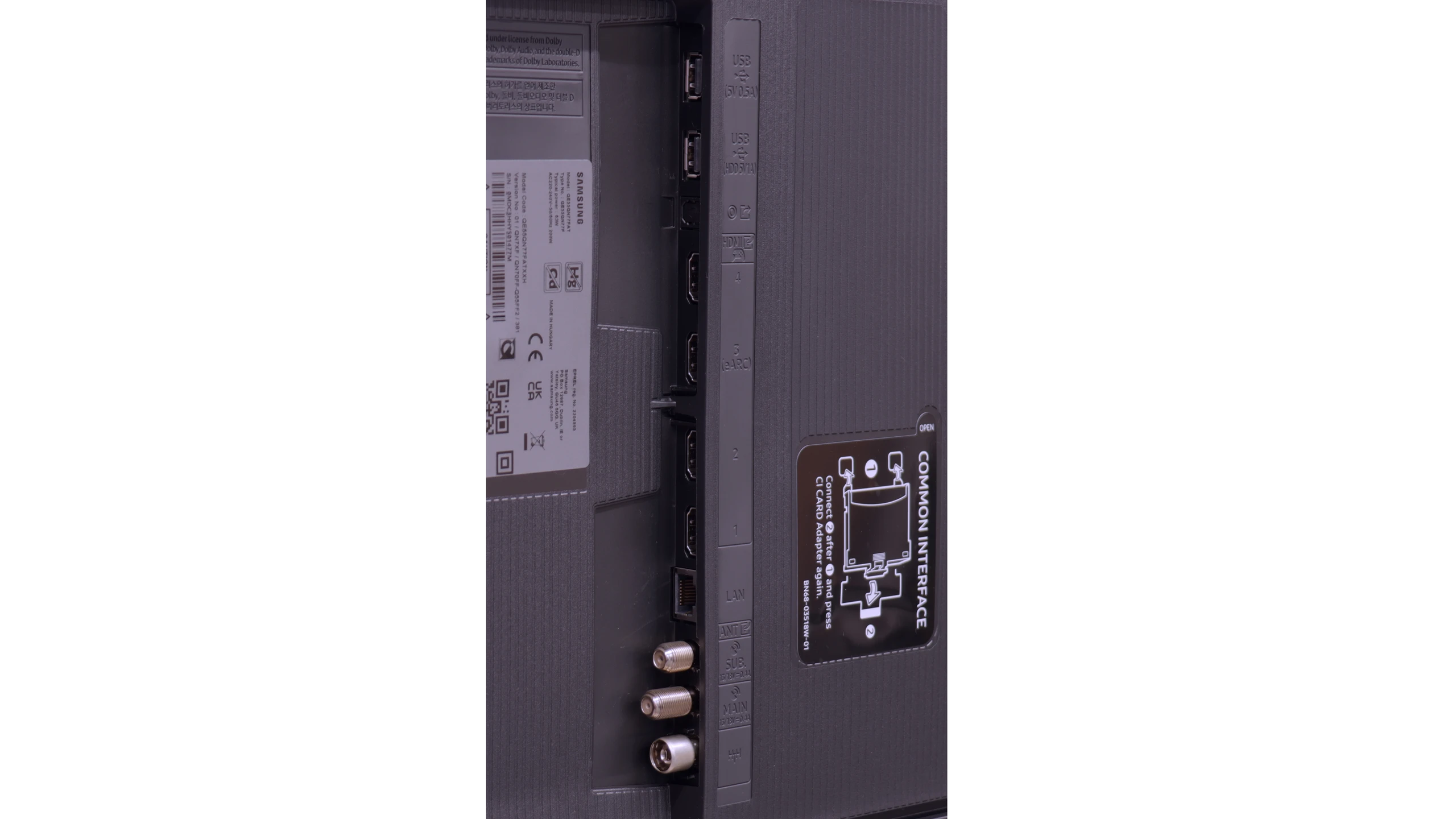
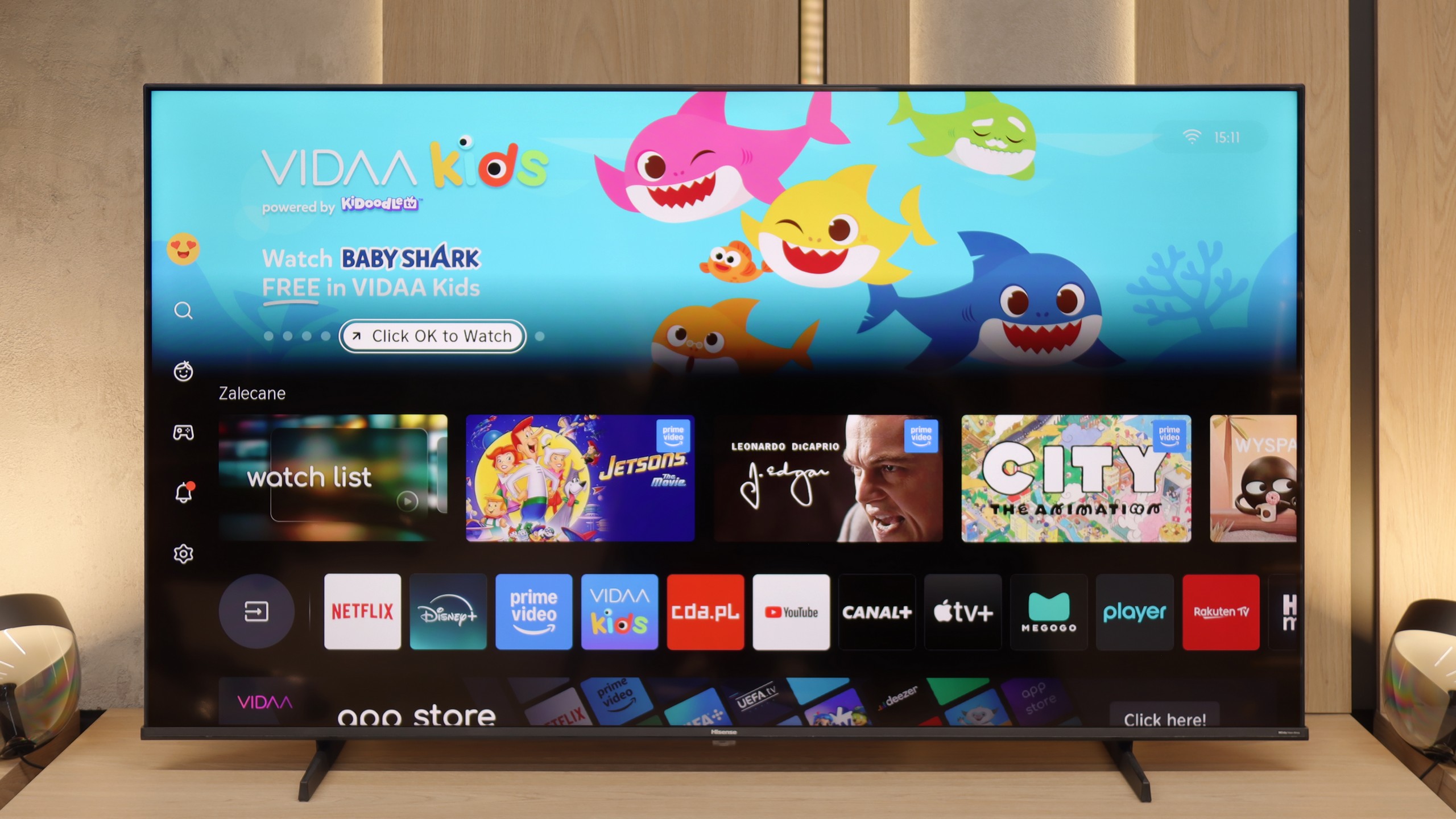
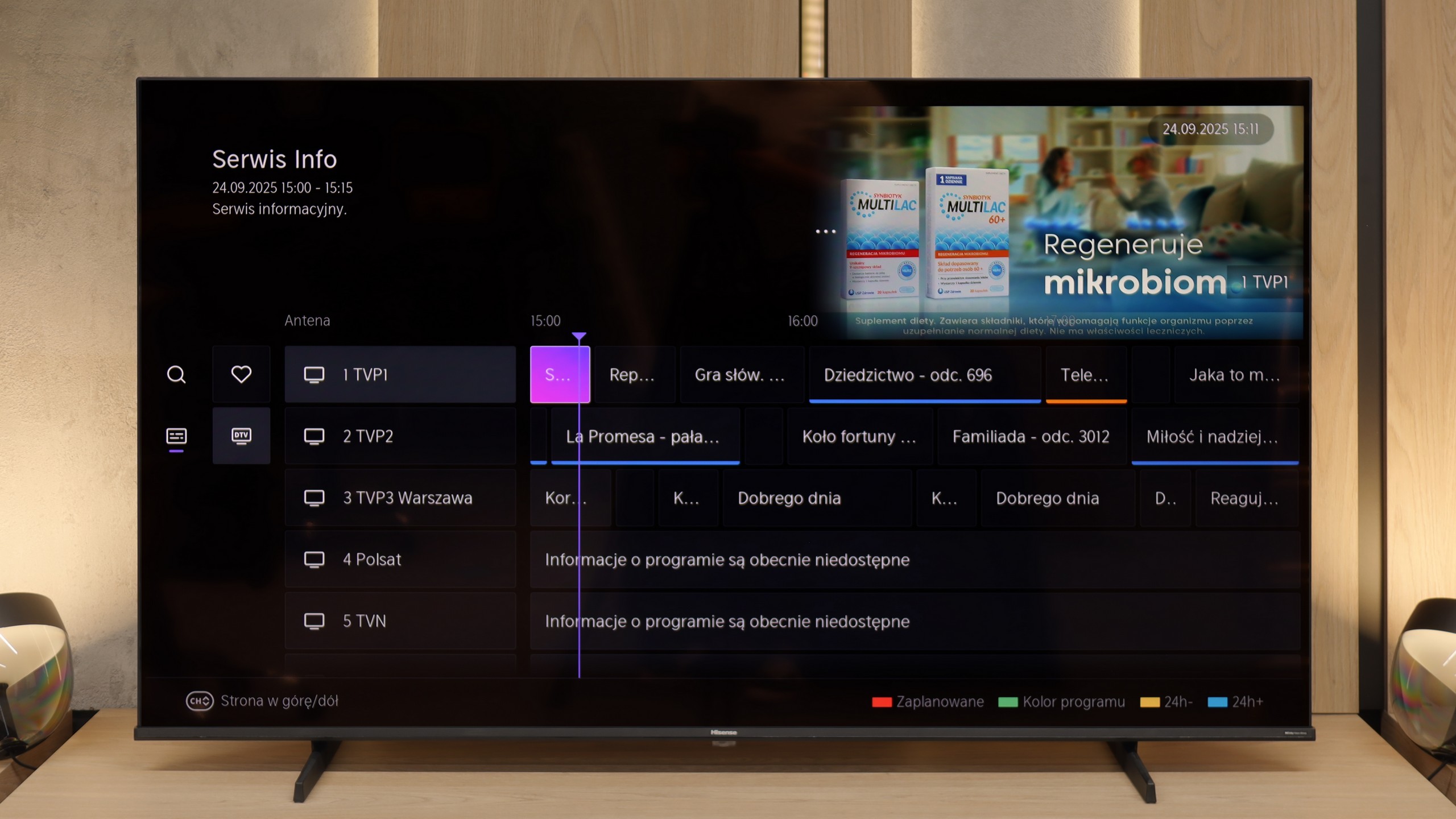
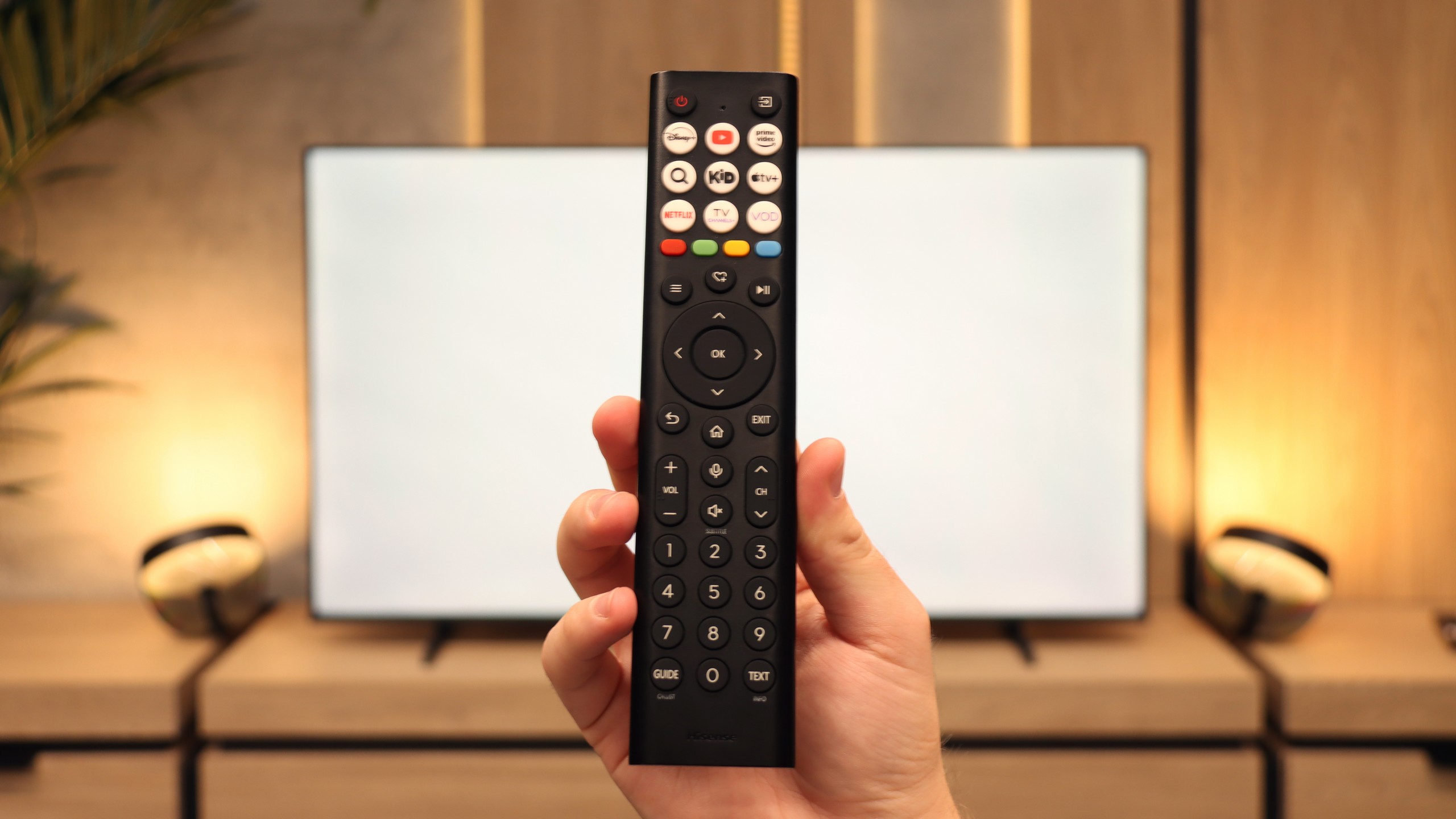
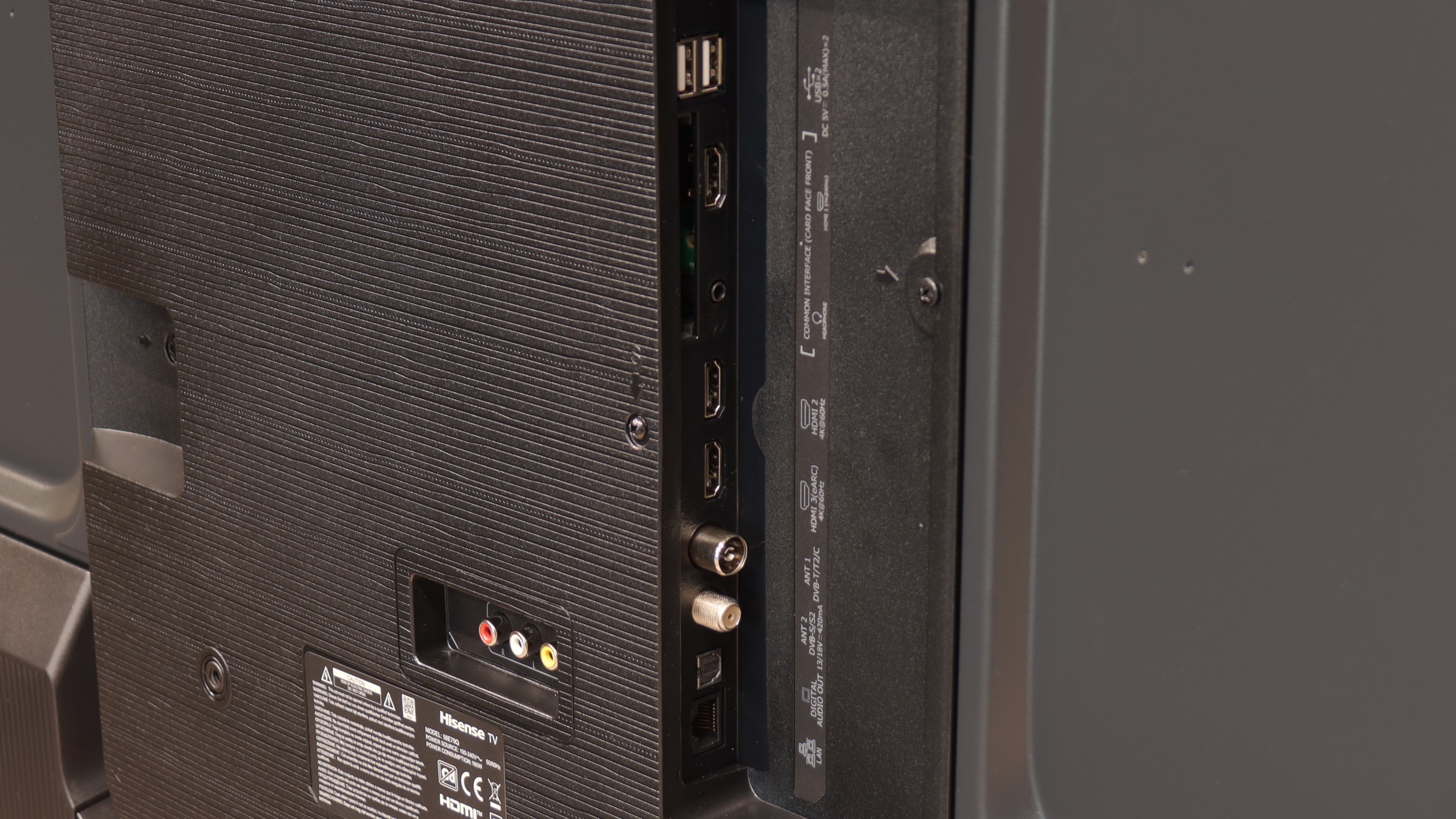
TV Features
The QN70F does not forget about classic features that still matter to many users. On board, we find, among other things, picture-in-picture mode (PiP), enabled by the presence of two tuners, teletext, and "Audio Only" mode – ideal if we want to use the TV like a radio. We can effortlessly pair it with headphones or a soundbar via Bluetooth, and the remote – despite the lack of a numeric keypad – works reliably, allowing control of other devices and additionally does not require us to aim at the screen. However, it should be noted that, as with all new Samsung models, we will not find USB recording functionality here. This is a system limitation that the brand consistently adheres to.
Smart TV QN70F – Tizen
The Tizen system, developed by Samsung for years, is one of the most refined Smart TV interfaces. It is fast, clear, and feature-rich. The QN70F supports voice search (also in Polish), wireless screen sharing from a phone (both via AirPlay and Miracast), as well as integration with watches and other devices in the Samsung ecosystem. All of this is connected by the SmartThings app, which allows controlling devices, automating tasks, and connecting devices on one network. (Not only Samsung brand). However, it is not perfect. Tizen is a closed system, so the selection of applications can be somewhat limited – especially compared to Google TV. All the major streaming services are in place, but if you use less popular services, it's worth checking before purchase whether they are available in the Samsung store.
SmartTV Features: Vidaa
When it comes to Smart TV features, the Hisense E7Q / E79Q runs on the VIDAA system, which has been developed by the Chinese manufacturer for several years. It's clear that the software is maturing – it includes AirPlay, Screen Mirroring, and voice search in multiple languages, including Polish. Unfortunately, in our unit, it worked quite slowly, which surprised us a bit since this system reacted much faster in other Hisense models. The limited app library is also a downside. Of course, the most important ones are there – Netflix, Disney+, and YouTube – but it's worth checking before purchasing whether you'll find everything you use daily.
Classic Features
In terms of typical television functions, the E7Q performs significantly better. We have practically everything one can expect from a classic television: recording from built-in tuners to USB, a jack headphone output, and even a component input for older audio equipment. Additionally, it offers full audio support via eARC, so you can be assured that regardless of the situation, the soundbar will always "perform as it should." The remote is also quite classic, well-designed with a lot of buttons (including numeric ones), which may be appealing to those who still watch regular television on the TV. 😉
Playing files from USB
9/10
8.2/10
Supported photo formats:
Maximum photo resolution:
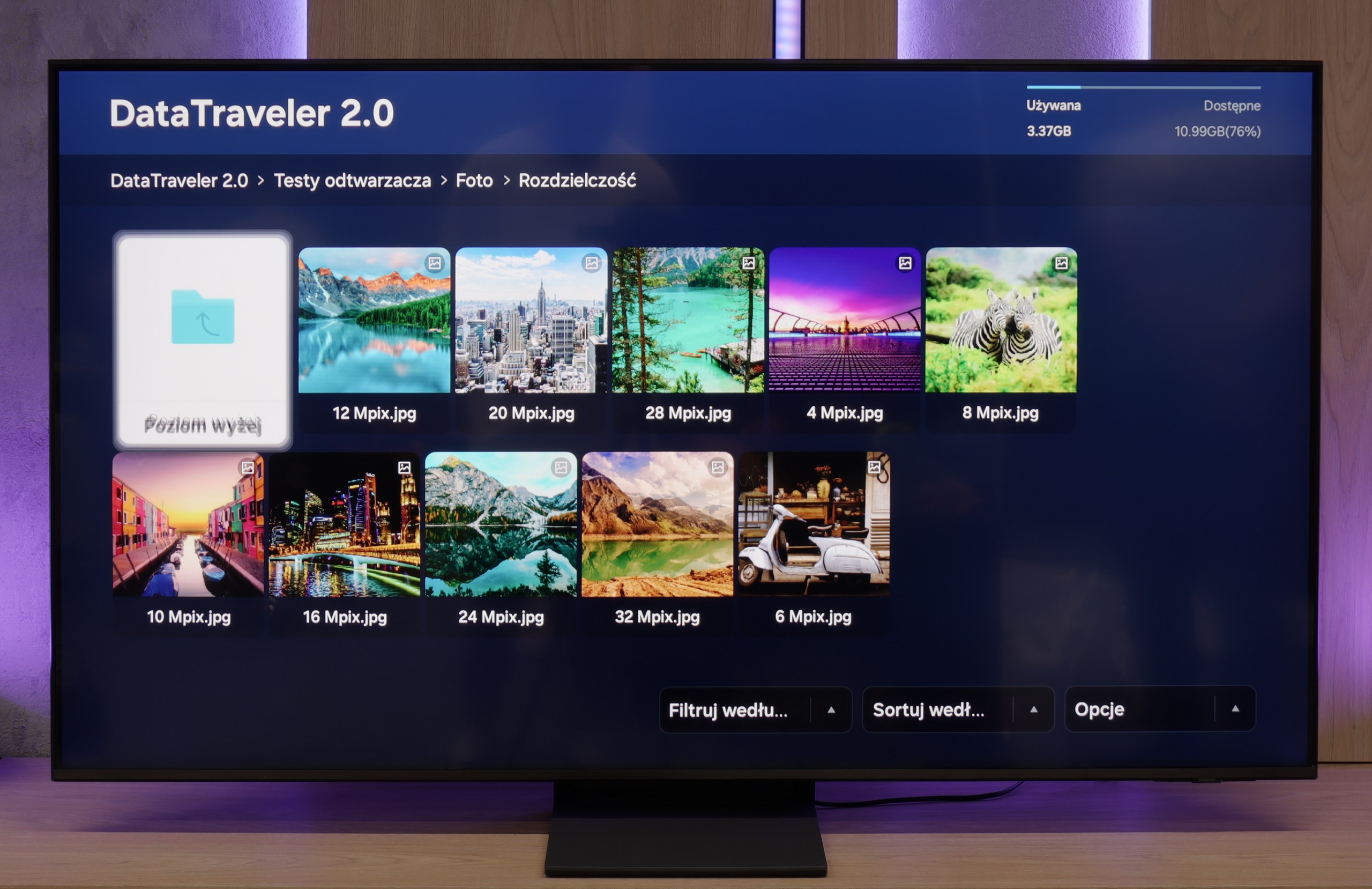
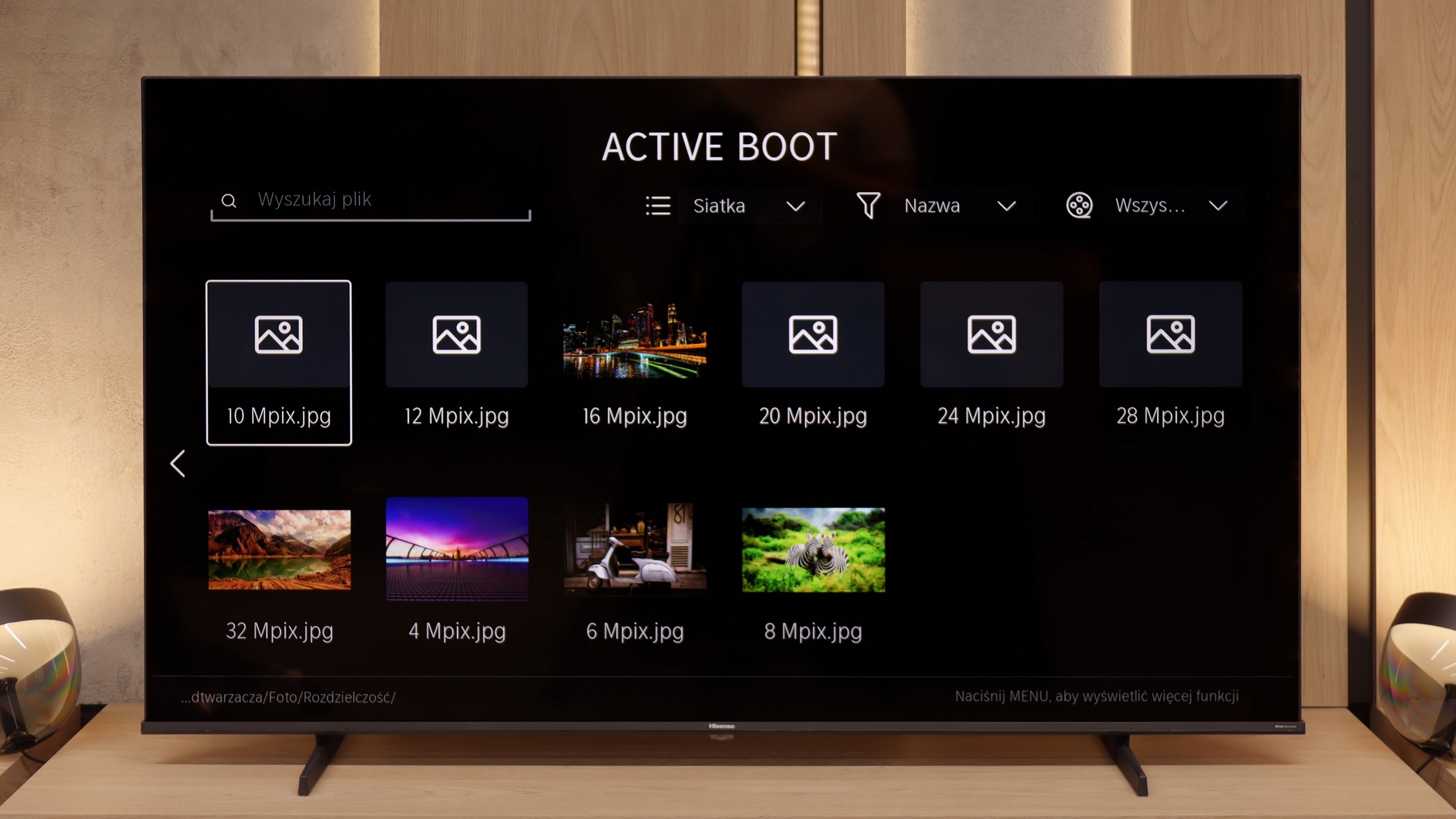
Samsung QN70F performs well in media playback – it easily runs pictures, music, and videos in the most commonly used formats. During testing, it opened JPG files, MP4, and TXT subtitles without any trouble, so for most people, this will simply be sufficient. However, there were a few files – despite having the correct extensions – that refused to play. It may be an issue with a specific version of the system, and the problem might disappear after future updates.
The media player in the Hisense E7Q / E79Q works correctly but can be temperamental. The biggest problem concerns photo support – the TV only handles selected formats, and some files simply do not open. This is quite surprising because even cheaper models from other manufacturers usually do not have this issue. Videos and music play without major problems; however, one has to reckon with the fact that the E7Q is not a master of versatility when it comes to files from a USB drive. It's rather a basic player that works – as long as we don't try to "surprise" it with something.
Apps
8.7/10
7.7/10














































Sound
6.4/10
6.3/10
- Maximum volume84dB83dB
- Dolby Digital Plus 7.1
- Dolby True HD 7.1
- Dolby Atmos in Dolby Digital Plus (JOC)
- Dolby Atmos in Dolby True HD
- DTS:X in DTS-HD MA
- DTS-HD Master Audio
The Samsung QN70F is quite average in terms of sound, which shouldn't be surprising given the exceptionally slim design of the television. The built-in speakers will perform adequately during daily news watching or simpler content, but it's hard to speak of any depth or spaciousness of sound here. It's simply a compromise that one has to accept when choosing an elegant and thin design over a bulkier housing with a better audio system.
The sound on the Hisense E7Q / E79Q is exactly what you would expect from a TV in this price range – rather flat, but quite loud. During measurements, the maximum volume reached around 83 dB, which is totally sufficient for everyday viewing. Dialogues are clearly audible, somewhat compensating for the lack of pronounced bass and depth. There are no revelations here: it's just a solid minimum that can be accepted. However, one positive aspect is the wide support for audio formats. The TV handles Dolby TrueHD, Dolby Atmos, and even the increasingly rare DTS:X. This is a nice addition, as we can be sure that regardless of the source – everything will sound as it should. (Definitely when we connect it to an external audio source like a soundbar).
Acoustic Measurements
84dBC (Max)
75dBC
83dBC (Max)
75dBC
